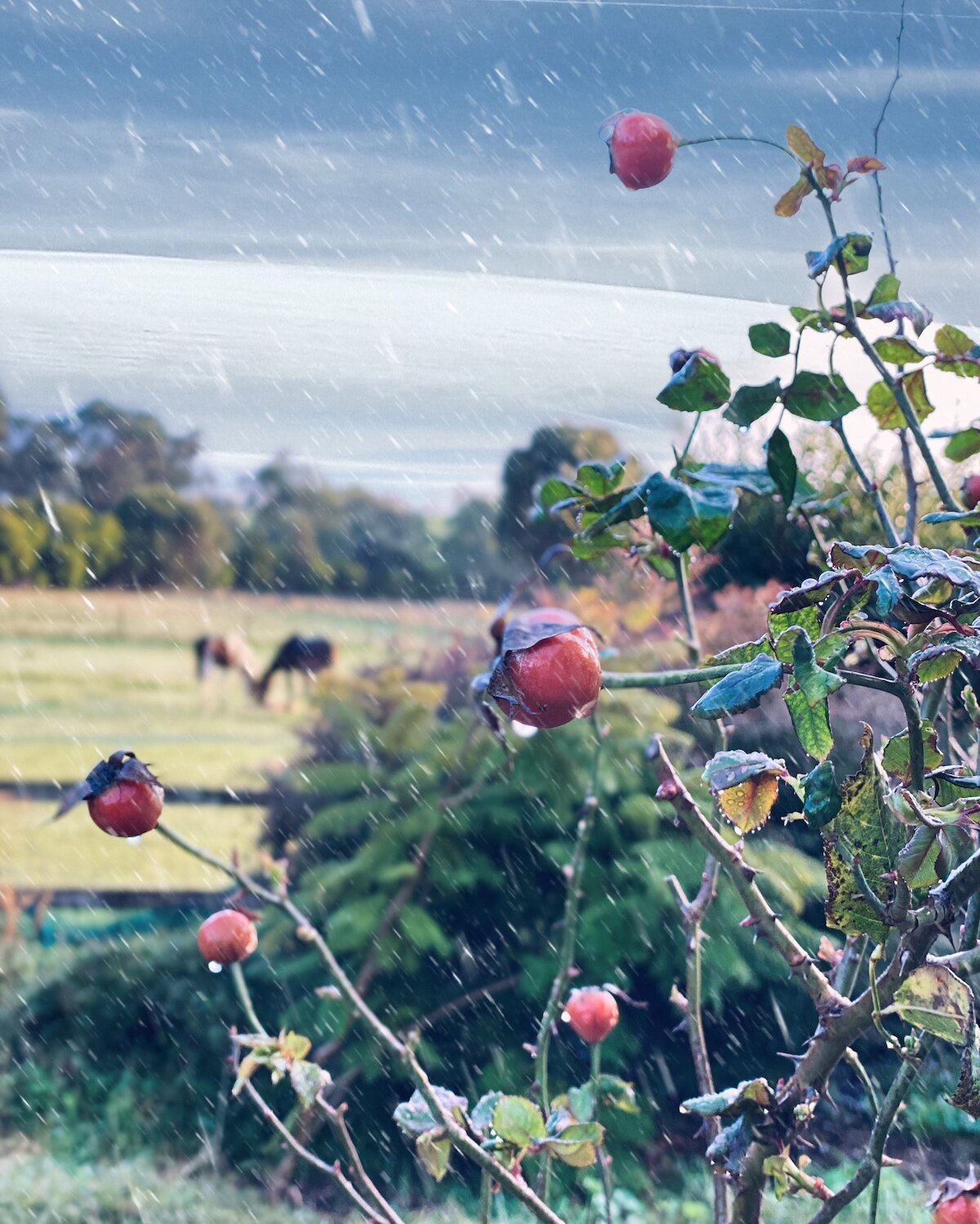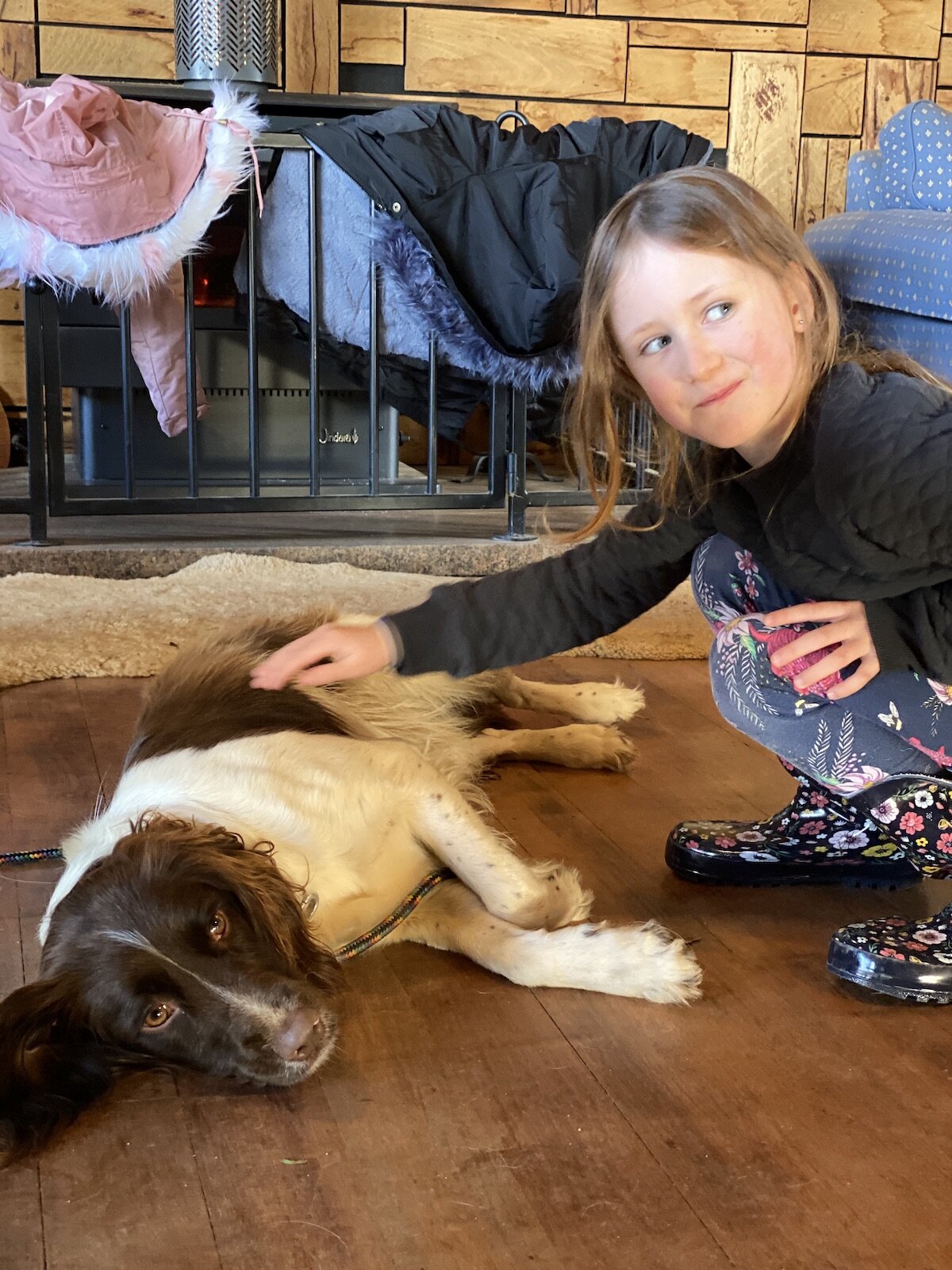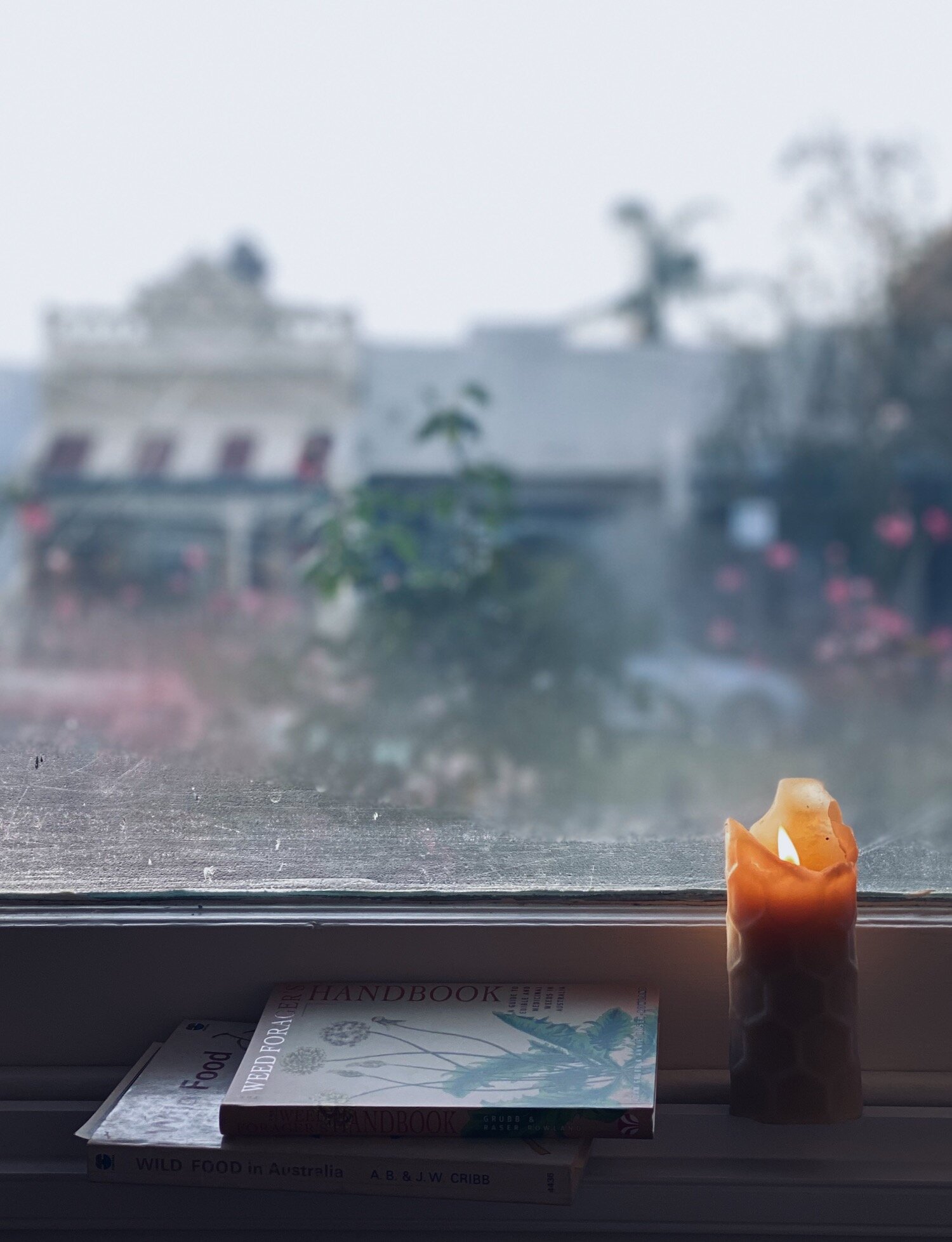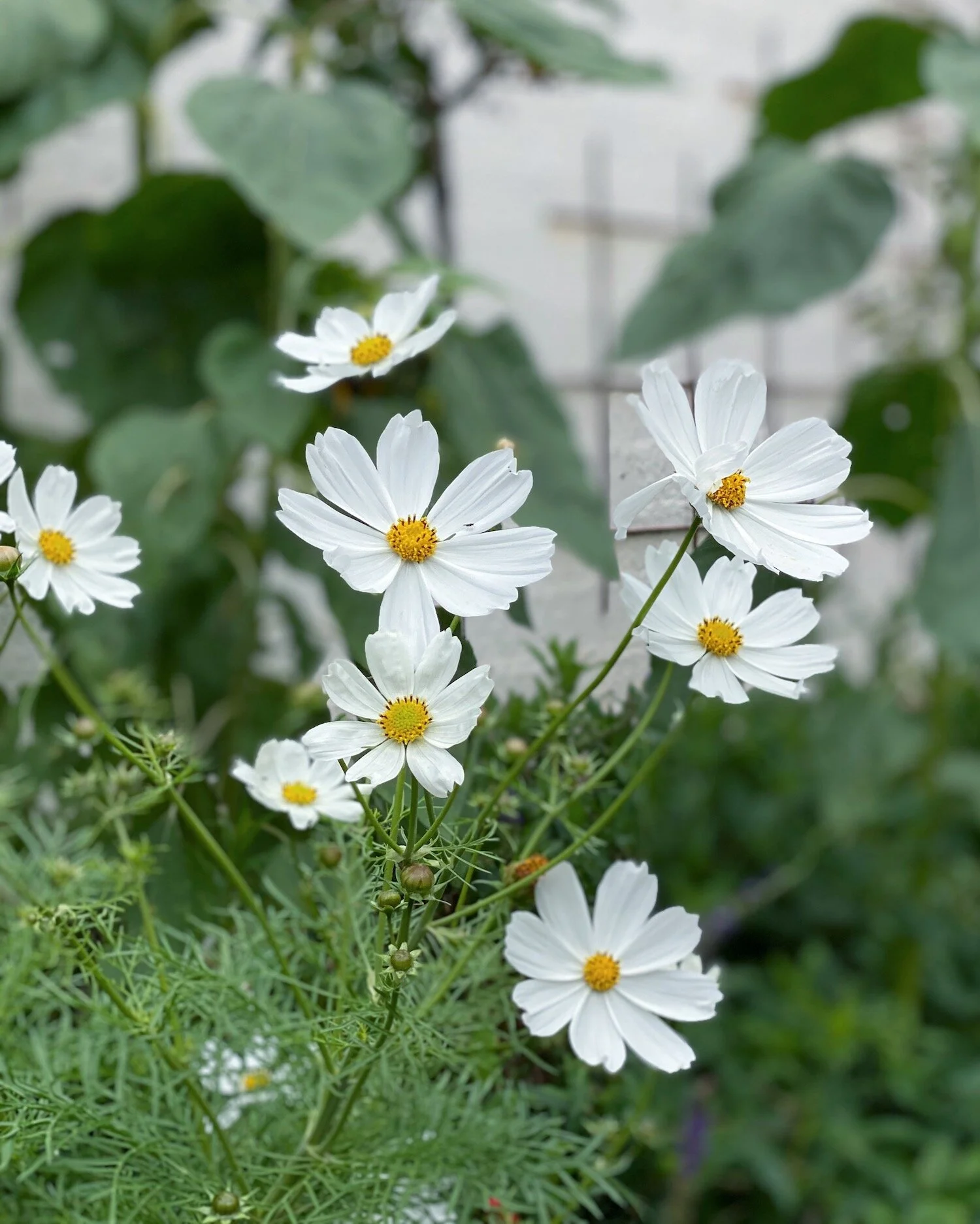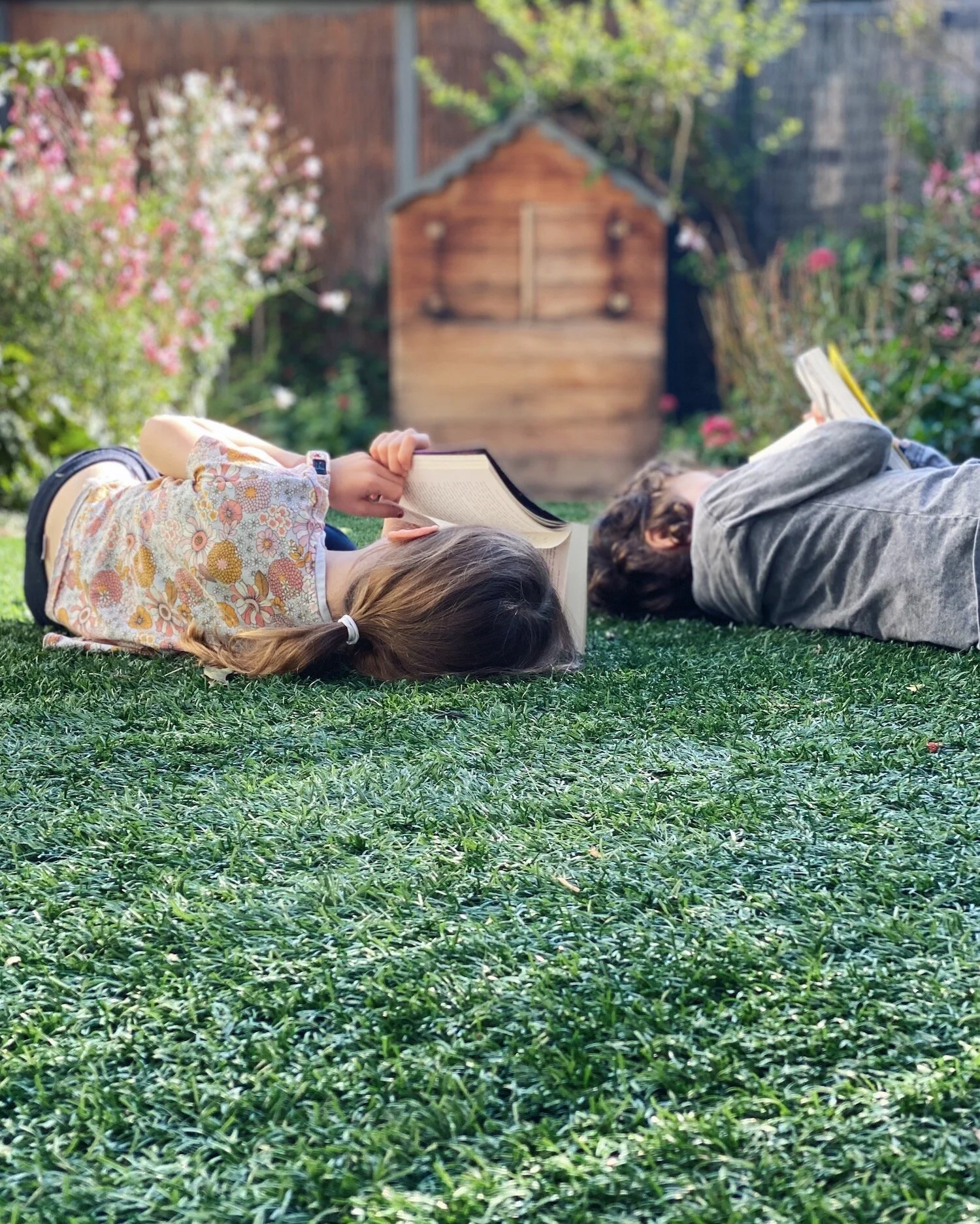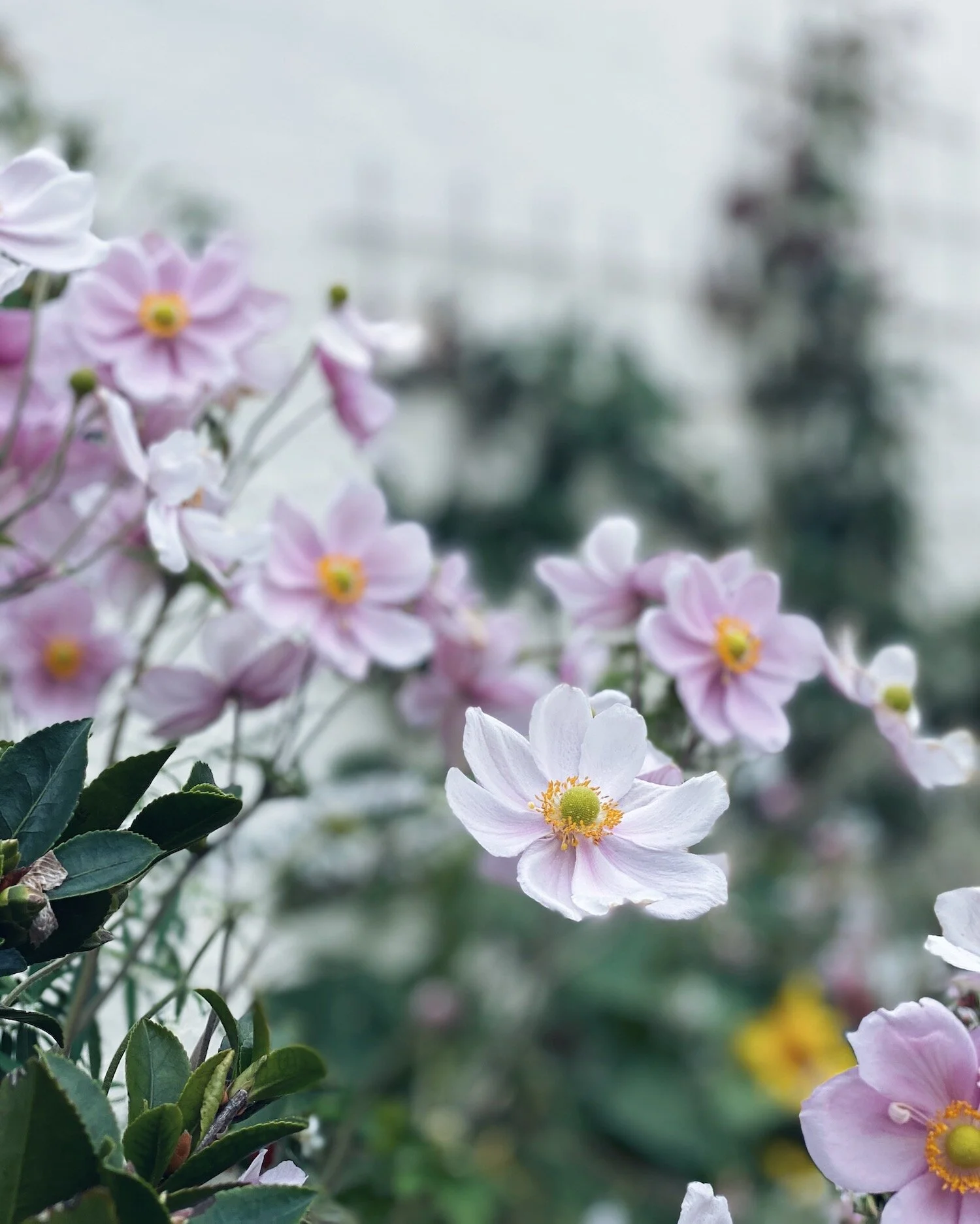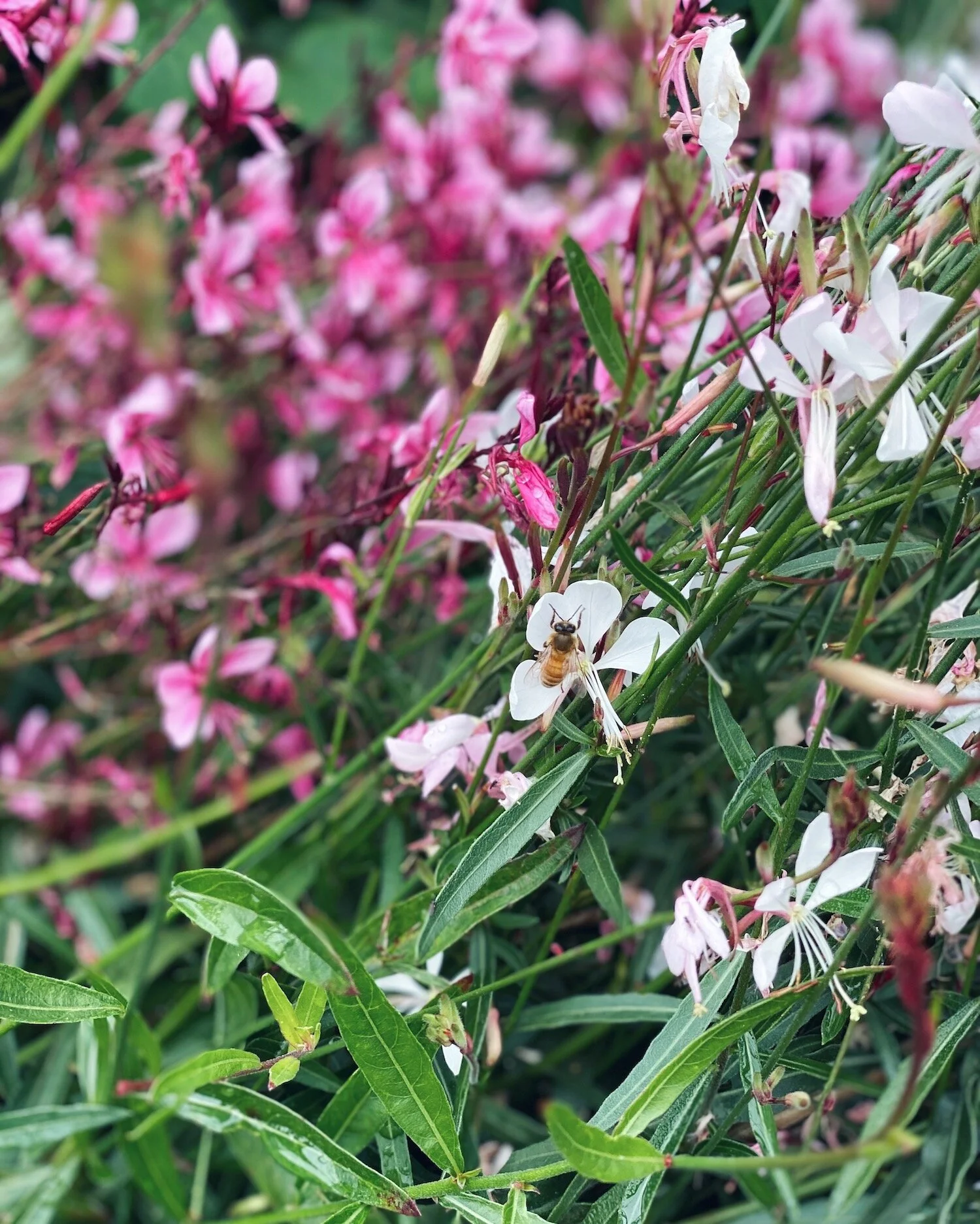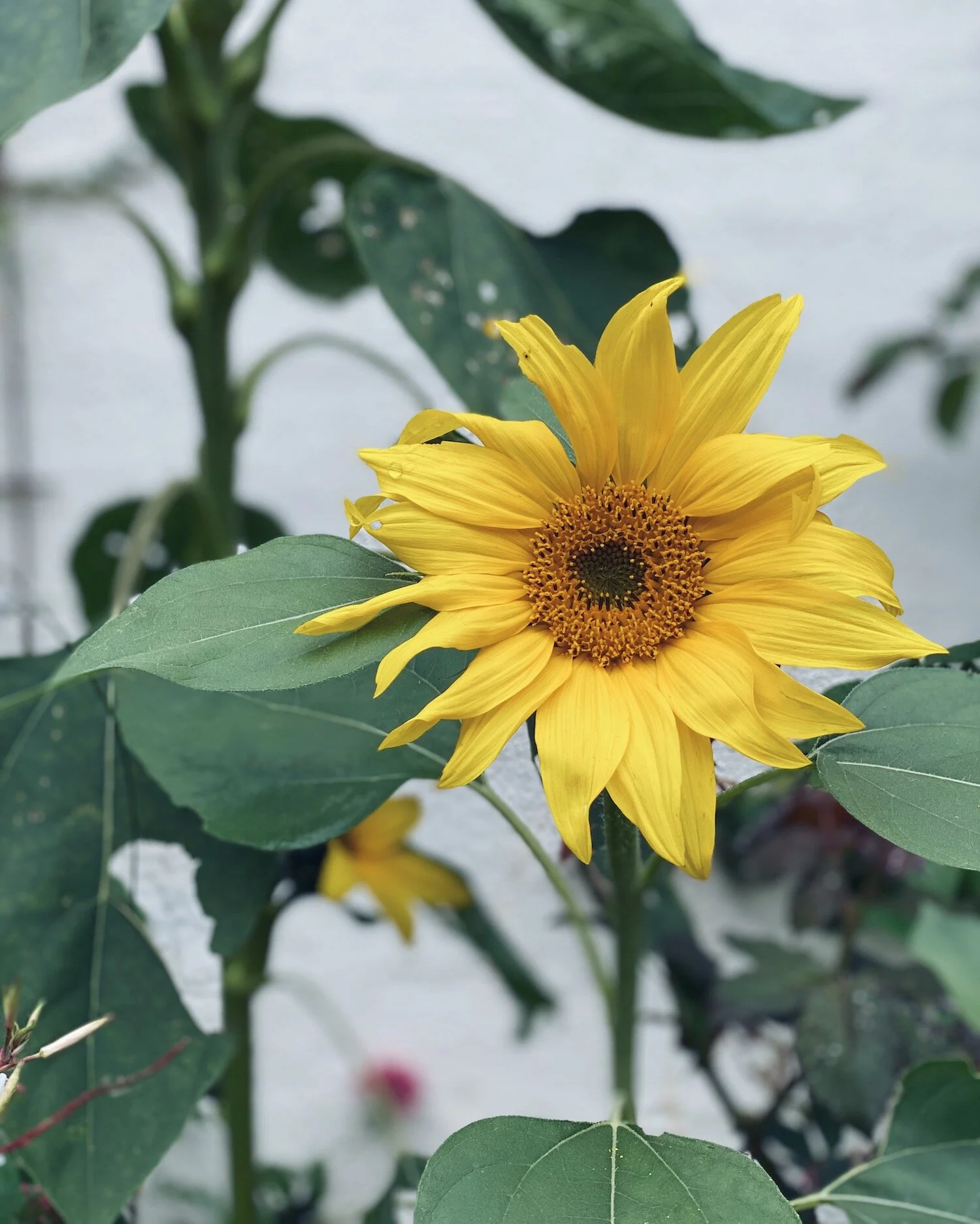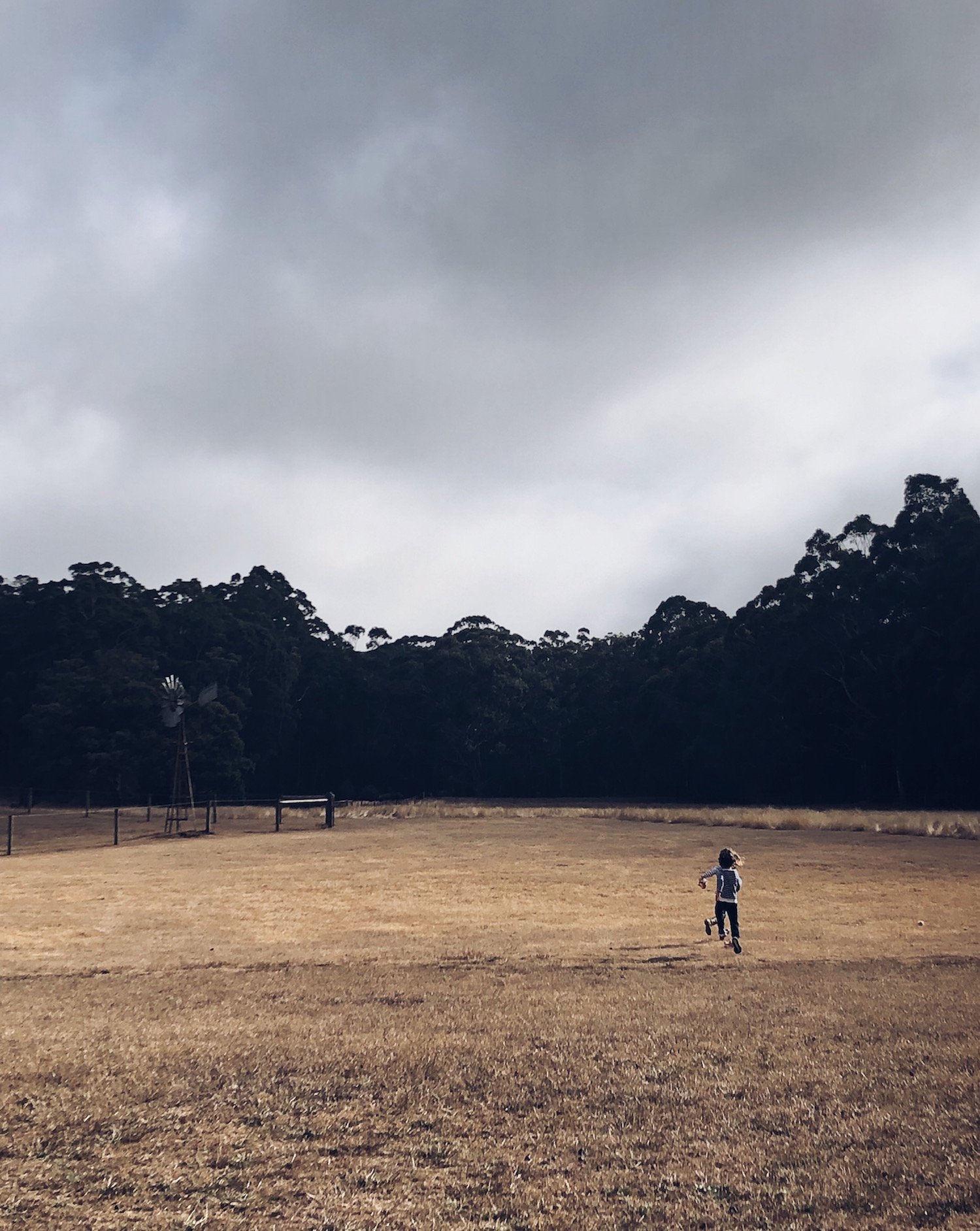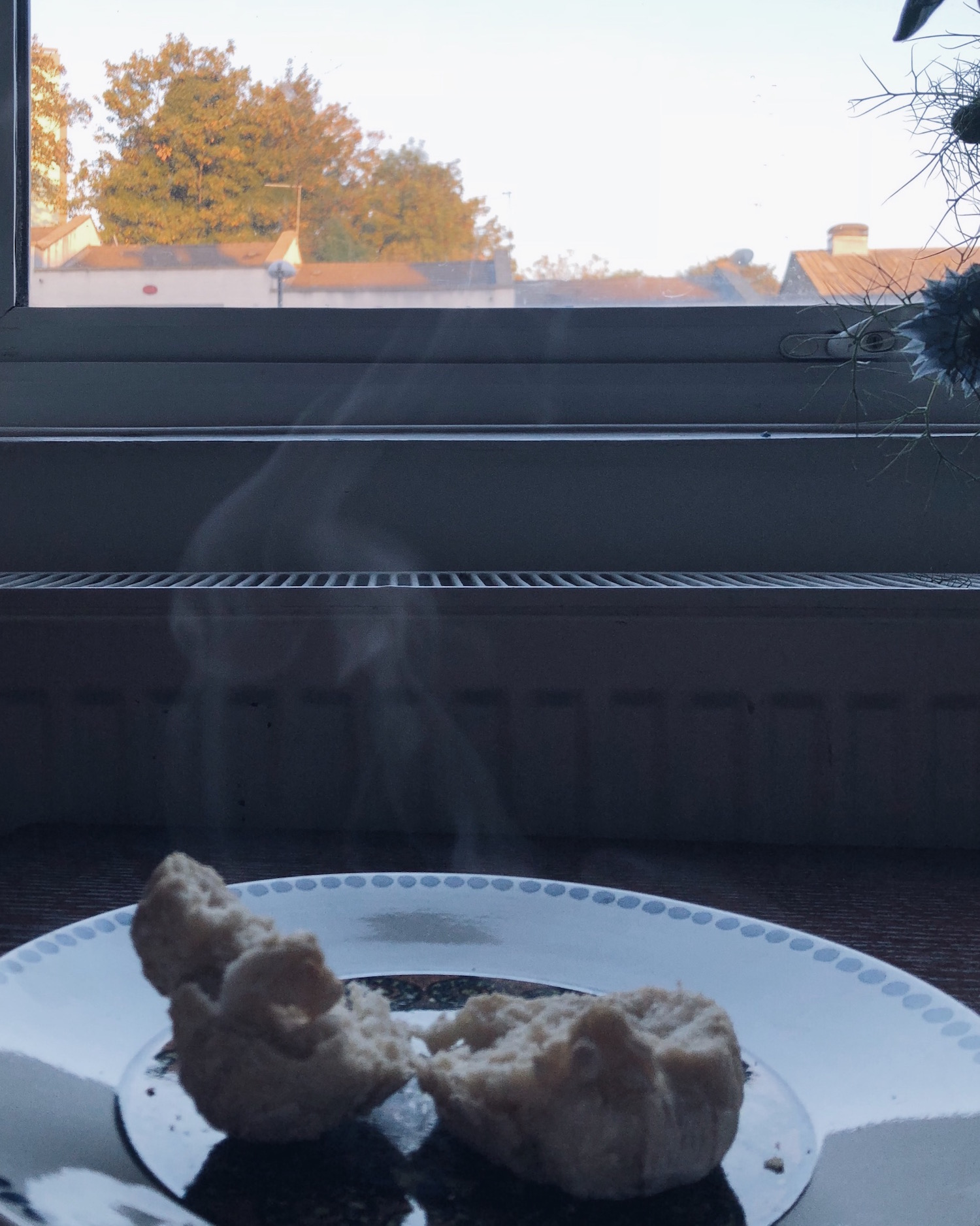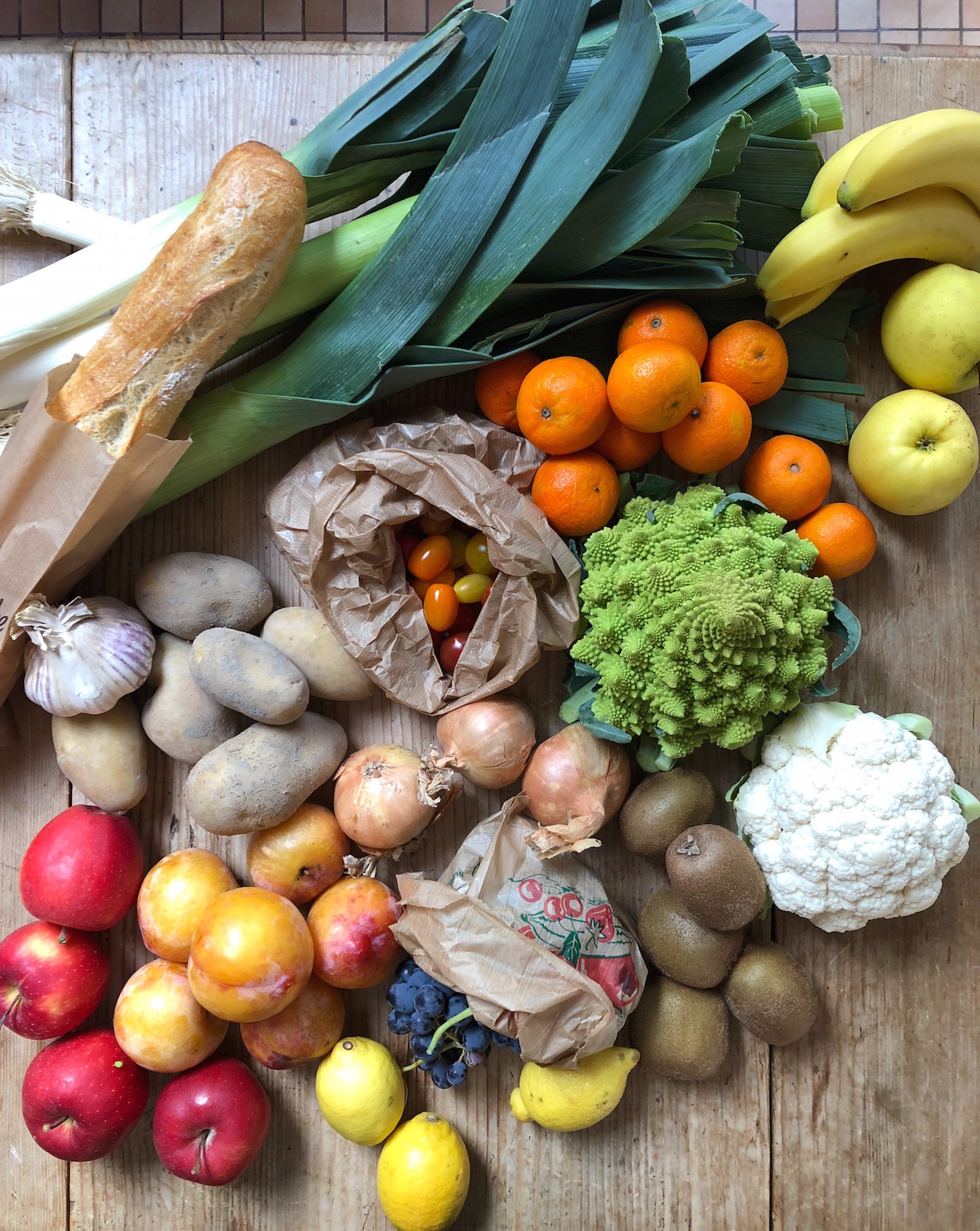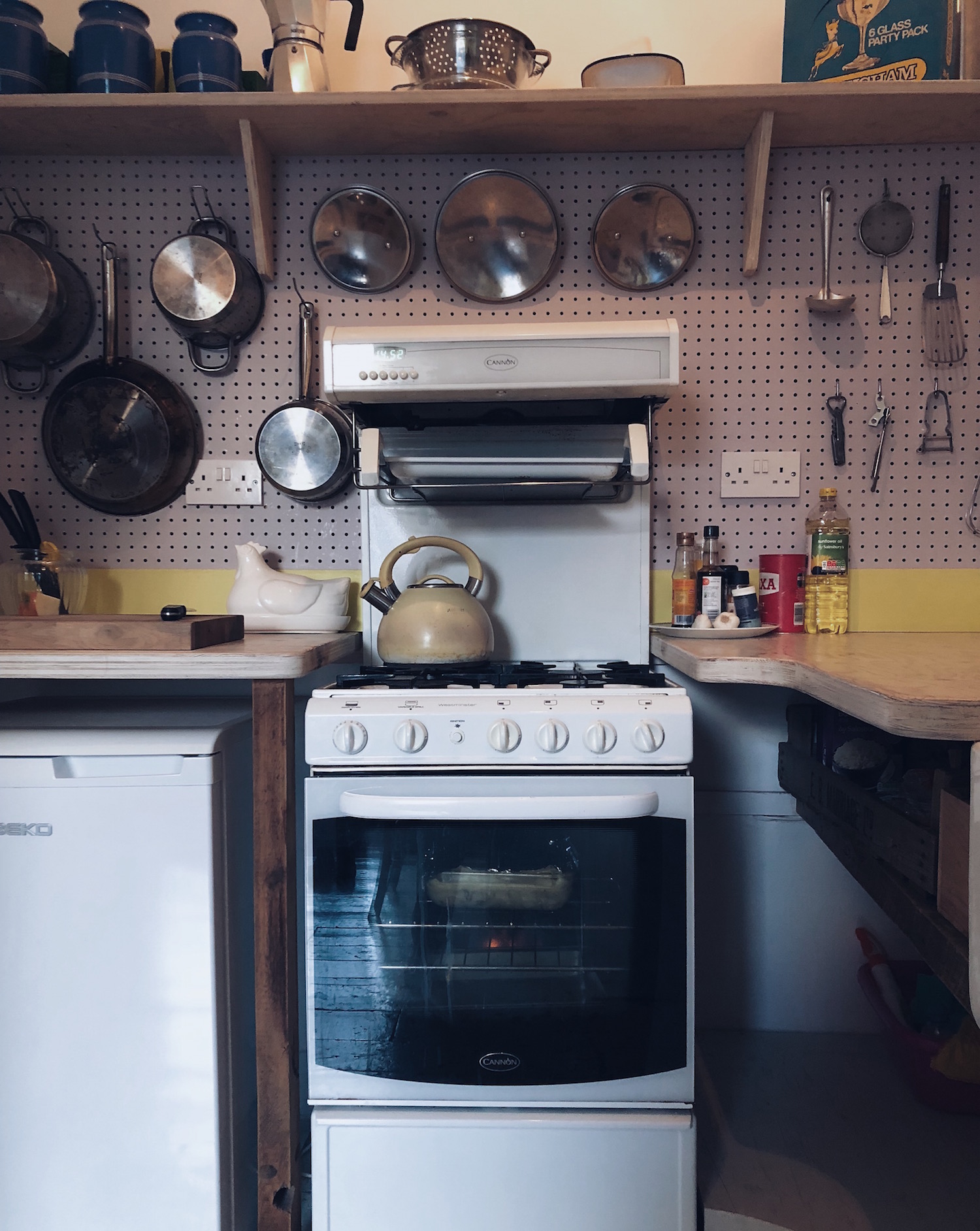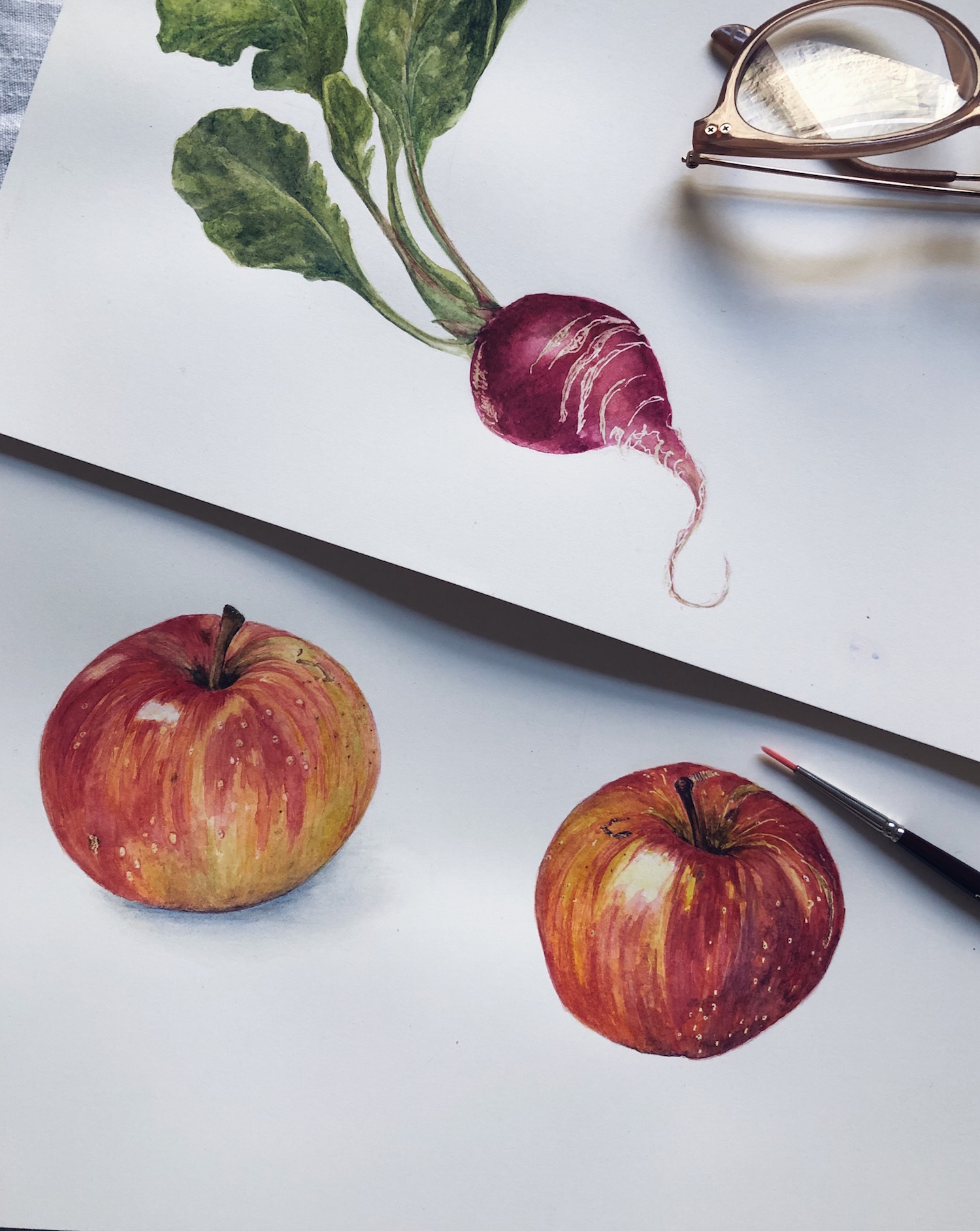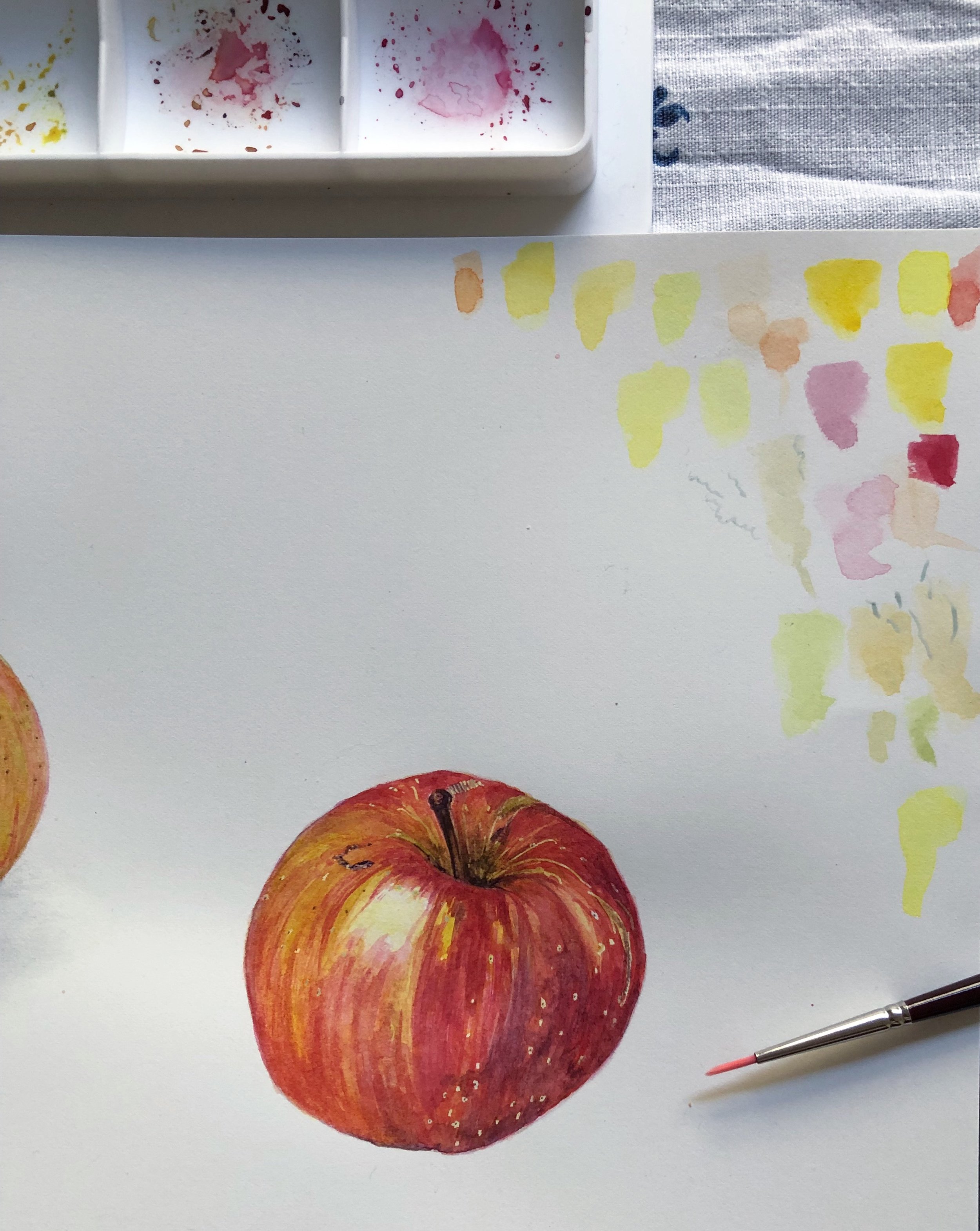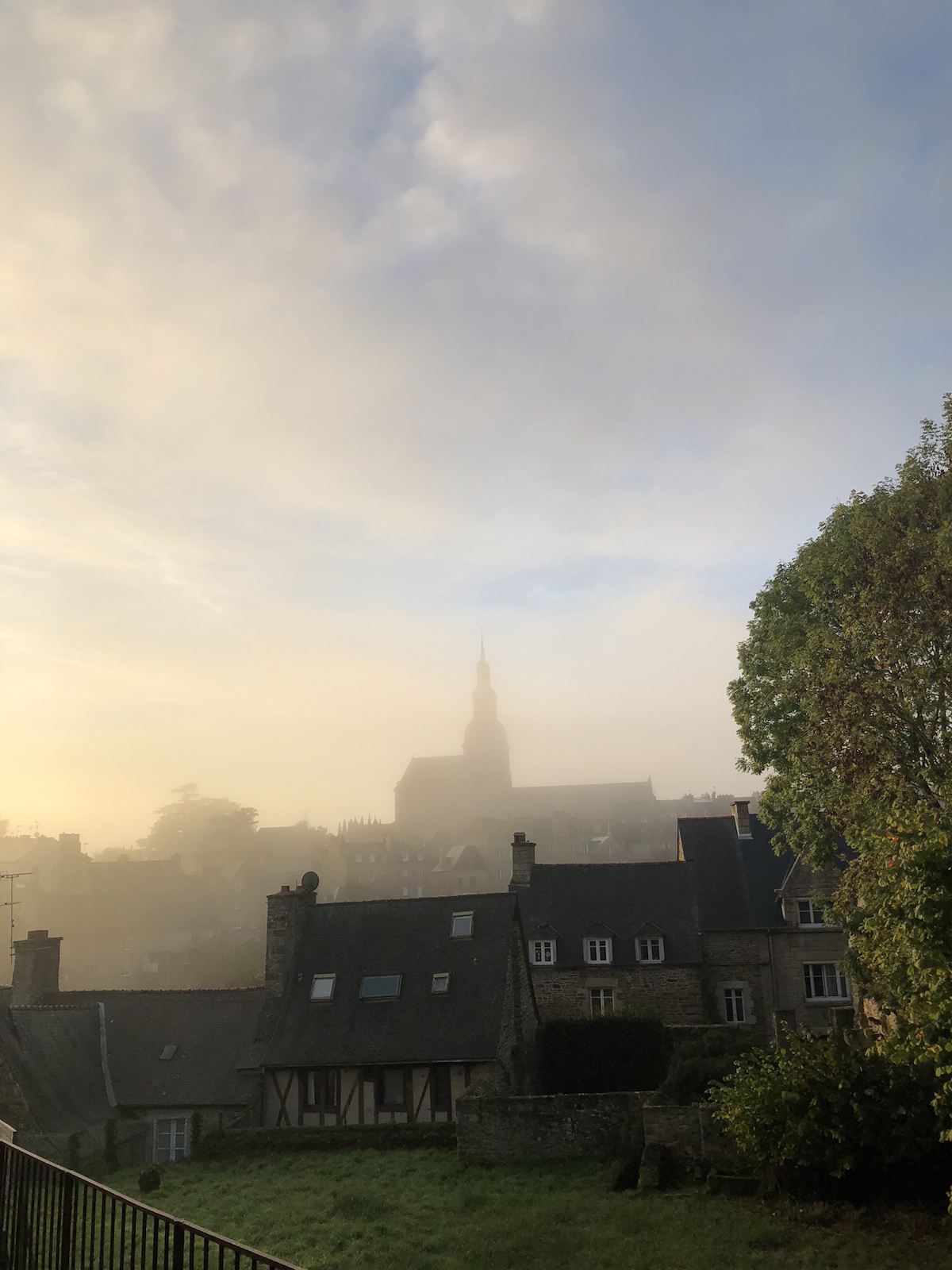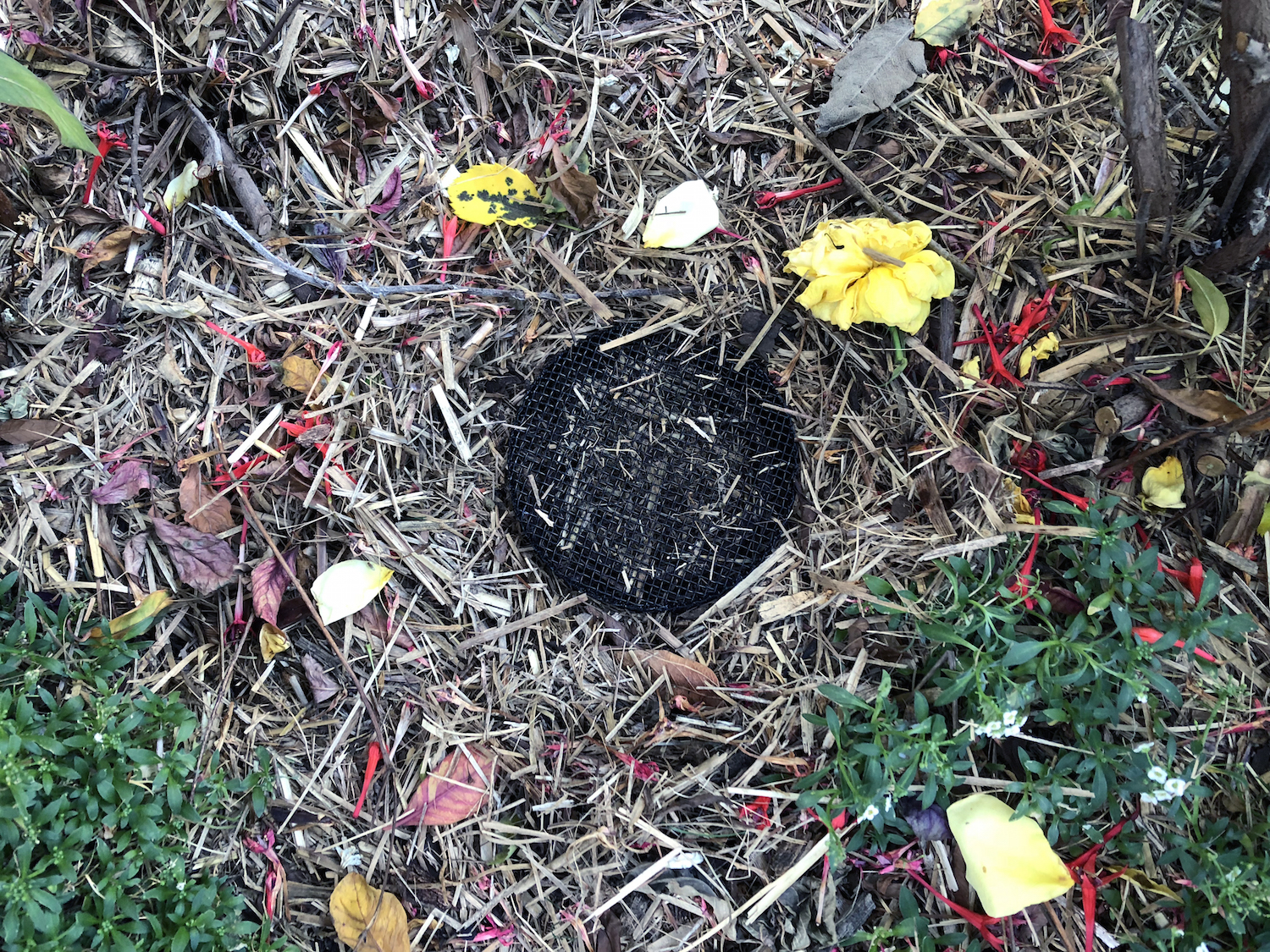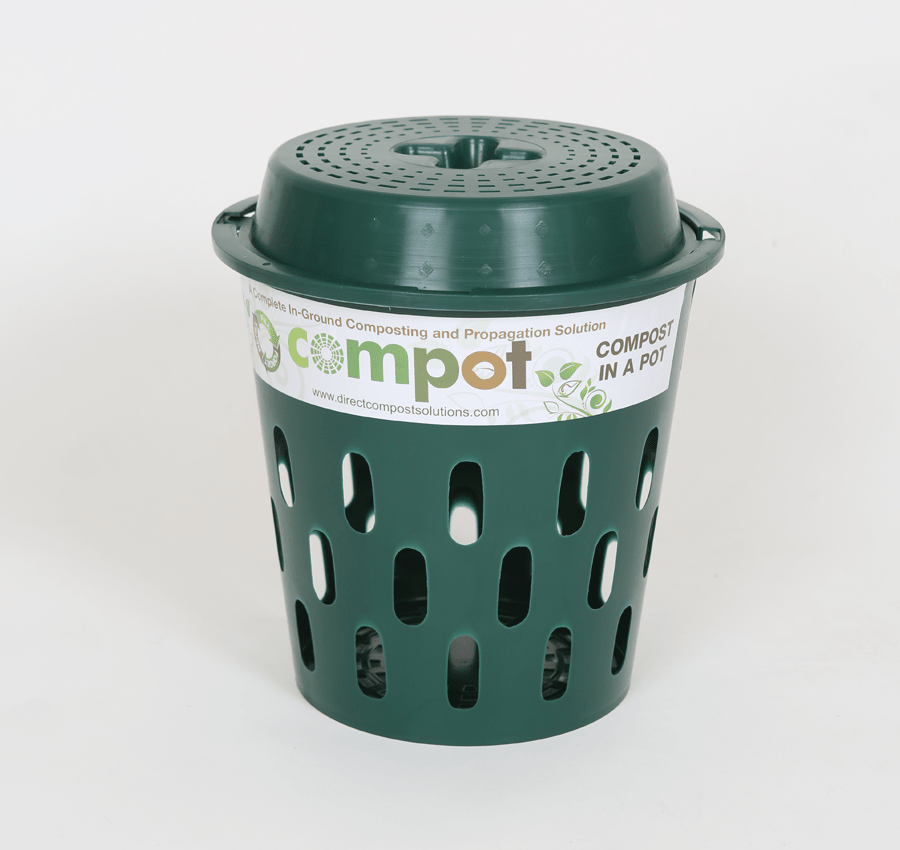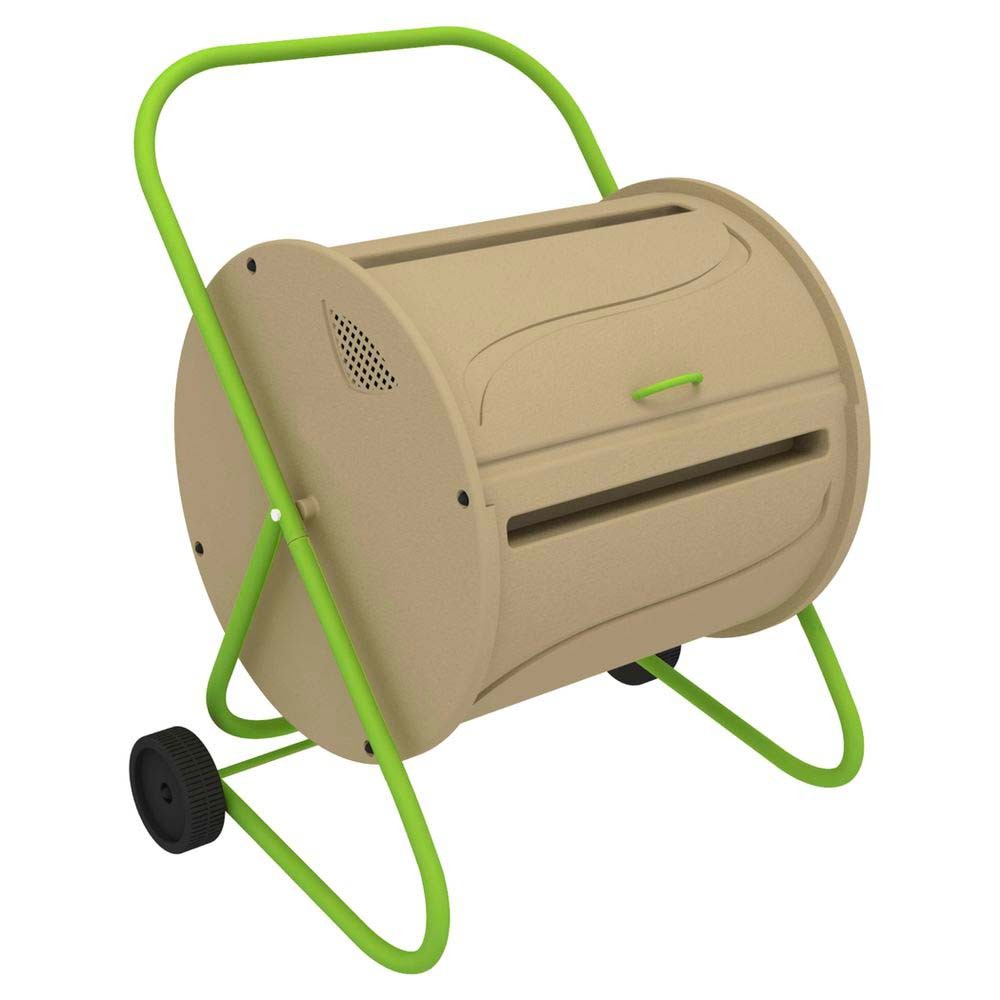
JOURNAL
documenting
&
discovering joyful things
Hunting for gold under rainbows
The first rainbow appeared in the morning, stretching in a big, lazy arc across the farmhouse, dissecting the clouds in luminous colour. It looked like one of those stretchy rainbow-belts we used to cinch around fuzzy, mohair jumper-dresses in the 1980s. The rainbow felt like a portent, a promise of good things to come on our little weekend away, our first foray out of town since everyone started hoarding toilet paper back in March.
In reality, the rainbow turned out to be a promise of rain: first a sun-shower, which blew Ralph's mind ("the rain is GOLD!"), but then the sky closed over and down it all came. We gave up exploring on foot and made a dash for the car.
There was a farm gate sign saying "Pine cones $2" and if you live in the country you will probably think that is CRAZY and why wouldn't people just go to the fun of collecting their own pine cones? But we live in the city and the last time we found our own pine cones the children were this little. And every year I say "We will find somewhere with old pine trees to collect some," but we never do. So we thought $2 was a pretty good bargain and pulled over to buy a bag to decorate them at Christmas, but there were no bags of pine cones left. Only worm juice.
The next day at the General Store they were selling bags of pine cones for $12, so I guess we know who bought all the ones at the farm gate.
The truffière building was at the top of the hill, all wooden walls and wooden floors and wooden tables and chairs, with a wooden kitchenette where they washed and stored the truffles, and a roaring wood fire by which two springer spaniels were sleeping.
We crowded in gratefully, hands outstretched to the fire, as the dogs danced around us and the farmer handed around a big bowl of truffles from her morning's find. Ralph whispered to me, "I don't like the smell of wet dog," and I couldn't tell whether he was actually smelling the dogs or the truffles.
(Something I learned: did you know you can put a truffle into a lidded container with your eggs overnight, and when you make scrambled eggs in the morning they will be truffle flavoured?)
I've heard truffles called "diamonds of the kitchen" and, as we stepped out among the oak trees, the winter sun was making a riot of the raindrops on the leaves and the entire farm was lit up like a million diamonds. Or a disco ball, if you're on a budget.
Thomas the springer spaniel led us through rows of oak and hazelnut trees. I asked the farmer, "Do the hazelnuts mean you get a double crop, or else a tasty consolation prize if you don't find any truffles?" She told me yes, in theory, except that the white cockatoos had eaten ALL the hazelnuts. All five acres of them. So there went my brilliant idea for homemade truffle Nutella.
I don't know what I expected a truffle hunting dog to do: maybe race from tree to tree, sniffing and barking like a police dog in a detective show? Instead, Thomas ambled happily among the trees, apparently enjoying the stroll, until the farmer told him, "Find a truffle, Thomas!" and he began to sniff around with purpose.
When he found one, he was simply supposed to lie down. But he didn't want to, because the ground was wet. He wiggled and fidgeted from side to side, easing himself part way down and then leaping back up and looking for a treat. I couldn't blame him, I didn't want to lie down in that mud either.
The next rainbow appeared over the oak and hazelnut trees, a brilliant arc reaching out of the sky and landing clearly in an open field to the left. We all paused in our dig for black gold to wonder whether there could be pot of real gold in that paddock. It reminded me of the time, when I was a teenager, that my brother's friend and I spotted the end of a rainbow at the bottom of our horse paddock. I raced down because I wanted to know what it felt like to stand inside the rainbow but when I got there, I couldn't see anything. Not until I looked up and there was the rainbow again, floating in a tantalising way above me. I leaped up and down, stretching to try and touch it, but to no avail. My brother's friend though, still watching from the top of the hill, said it looked as though I was dancing inside a river of colour.
Our first truffle was rotten from all the wet. The farmer cut it up and dropped it into a shallow ditch dug alongside the trees, so that the spores would soak into the soil and re-inoculate the trees. But after that, Thomas found his stride, and both children were given a turn digging up their very own "black gold." I thought they might have found it boring but they were excited: it was like a treasure hunt! They both made polite and appreciative "Mmmm!" sounds when the farmer passed them their muddy treasure to sniff, although neither was keen on eating anything more adventurous than truffle butter on their warm bread at lunch later.
We might have kept going but at this point the rainbow fulfilled its promise again and as "light sprinkling" transformed gradually but all too quickly into "decent downpour," I remembered that I had left our umbrellas inside the timber-clad shed with the roaring fire and the second sleepy springer spaniel, so we all made our way back up the hill and out of the cold winter rain.
Later at lunch in a nearby winery, warm and dry, we watched the rain and sunshine come and go across the vineyards in dancing swathes of alternating grey and gold. The children approved of the truffle butter on their warm bread but truffle shavings over the potato soup was a bit too rich for their taste and both declared truffle ice cream to be "just wrong." That's when the third rainbow appeared, framing the vineyards like a bucolic oil painting.
Then the skies closed and the rain returned, gurgling through pipes and plonking and splashing off the wine barrels on the empty verandah outside. A frog started singing. Is there anything more cosy that watching winter rain fall outside, while you are inside where it is warm, with the people you love the most in the world, feasting together and sipping wine, with nowhere else to be for the entire afternoon?
Apples, autumn, and broken hearts
It was a poignant moment. We were out for our daily exercise, the children rolling their scooters through piles of leaves and whorling autumn winds, turning the footpath into a miniature circus maximus (a circus minimus?) for their two-wheeled chariots.
There was a letter for Scout in the post and seeing it reminded me that she had a birthday coming up. (Eight! How did that happen?) And that for once, I’d have to plan ahead, this time relying on the already slow post for any birthday shopping.
I stopped her mid-chariot race and asked her to think about what she might like for her birthday this year (“no promises, but you can always let me know”). “OK!” she agreed, then scooted off again with her brother, no doubt happily dreaming up a wish-list of plastic monstrosities and impractical clothes. I braced myself.
Several more blocks of walking and scooting passed, several more mountains of leaves, but surprisingly, the requests failed to come. “I just can’t think of anything,” she told me at last.
On we scooted, more races, still more leaves, until she circled back to me again. “Mum, I don’t know what I want for my birthday because the only thing I actually want, I can’t have.
“I just want my friends.”
And that right there is how hearts break.
But in happier news…
Lingering autumn sunshine at the start of this week enticed us back out into the garden, where I cut, trimmed and coaxed all that was end-of-summer and overblown back into order, ready for the winter sleep. I lifted out the dahlia tubers, cut back the salvia, pulled out the over-zealous wild violets, gently pruned the standard roses and ruthlessly pruned the climbing roses. Out came the elderberry suckers, finished sunflowers and dried-up cosmos. In went the sprouted celery-bottom, a winter tarragon, and a neat row of garlic cloves.
All of the above was completed in stages, in between me being escorted away in gentle but no-uncertain terms by the bees, all of whom appeared to be knee deep in a case of autumn-mania. They’d permit me to dig and cut for only so long, before one would start circling my face, buzzing and nudging until I hot-footed it back to the house. There I’d hesitate in the shade of the balcony, calling out futilely, “You’ll thank me in the spring!” before venturing, inch by inch, back to the garden bed. Ten minutes later, we’d start the whole parade all over again.
When the bees permitted, I discovered the first spikes of daffodils, bluebells or snowflakes - I’m not sure which, it could be any combination of the three - peeping up from among the fallen leaves, harbingers of future colour.
A day or two earlier, on the weekend, Scout and I had walked to CERES in what was frankly freezing rain. It was such a pleasant walk together despite the weather, holding hands and chatting about everything and nothing. Once there we picked up a new pair of gardening gloves for her (which she wore home to ward off the cold wind), and a dibber for me, which was the point of the excursion. And here is a great mystery: why is it that as I hurtle towards my fifth decade on this planet, I have only just now purchased a dibber for planting bulbs?
Every year, putting those bulbs down has been an arduous, time-consuming task, trying to dig holes with a spade, deep and narrow, while not disturbing the roots of any surrounding plants. But yesterday, I put down 20 white bluebells, 10 snowflakes, 5 spare tulips, 10 allium drumsticks, and 10 nerines (all unplanned, Edna Walling style, by gently tossing small handfuls in the air and planting them wherever they landed). It probably took me less than half an hour to plant the lot, with zero disruption of the roses or any other pernickety plants nearby. Thank you dibber, my new best friend.
I’ve been researching a big list of seasonal produce, and painting them as I go. The biggest insights so far have been just how little I know.
Take apples, for example. Apples are autumn fruit and we probably all know that. Even I knew that, so I didn’t think there would be lessons to learn about eating apples in season. But I was wrong! Because here in Australia, apples are available all year ‘round, in both the supermarkets and all the fruit and vegetable shops. Even at the fruit and veg markets. And I’ve never really thought about where they are coming from but, if you’d asked me, I’d probably have hazarded a guess that Australia has a (relatively) moderate client, and it’s big, so the apple season lasts longer and spreads across several months in several States.
As it turns out, no.
The apple season lasts a couple of months at most. And here’s something I should have known but didn’t: once the apples are picked, the ‘bloom’ (the natural wax on them) is blasted off, to be replaced by a new wax made up of either shellac - secretions made by lac beetles - or carnauba, which comes from Brazilian palm trees. Then the apples are put into cold storage for up to a year. That apple you buy in December has probably been sitting in the ‘fridge since April, and may or may not be coated in beetle secretions.
Anyhoo, we all get to choose how we shop and what we eat, and I’m not immune to the fact that there is an enormous amount of privilege in me making that statement. But my point is, no judgement! Eat the December apples, don’t eat the December apples. Wax on, wax off, Daniel-san. But isn’t it nice to make choices that are informed? In the future I’ll be keeping one eye on my research, and the other on the calendar to find out when the farmers’ markets reopen, redoubling my efforts to shop direct from the growers.
And in the meantime, the winds have picked up. The autumn leaves are falling. Let’s play!
Wins and losses and taking stock
The ebbs and flows of life in lockdown.
Win: this week Scout discovered the joys of Harry Potter. She is nose-deep in Harry Potter and the Philosopher’s Stone, and each morning when she comes downstairs after reading, we talk about what has been happening inside the pages. Sharing a book I love with her is like travelling together. We may not be able to leave the neighbourhood but together, we travel to Number 4 Privet Drive, to Diagon Alley, and to Hogwarts, every morning.
Loss: school at home. Don’t even get me started! I don’t think I’ve ever felt the kind of anxiety I experienced during that first week of school. The teachers are doing the most amazing job creating learning content for the children, and I’m incredibly grateful. Let’s just say there is a disconnect between the school’s expectations and communications, versus our access to technology, devices, my time, and the children’s capacity to independently follow instructions and use technology they have never seen before.
Win: last Thursday we ditched school for most of the day (with permission) and spent several hours baking hot cross buns via Zoom with private cook Gillian Bell, otherwise known as @gillianbellcake on Instagram, and one half of the delightful Dispatch to a Friend podcast. Gillian gave up a good part of her day to bake with us, and I can’t decide whether the best part was the proud smile on Scout’s face when we pulled those wonky-but-perfectly-cooked buns out of the oven, or the joy of spending time with Gillian and chatting with her about everything from yeast-bubbles to mental health and post-war life in London. I’d like to do this again soon, please.
Loss: scared and angry people in the street looking at my children as though they are predatory germ-terrorists every time we have to leave the house to get food or exercise. We follow the rules. We stay out of the way. They huddle in sad corners outside the grocery store following my instructions to stay out of the way, not move or touch anything, while I race in and buy the basic staples I can’t get online. They dive into bushes to escape cyclists who race past without slowing or swerving on the shared foot-and-bike path. And they endure angry looks, snide comments, and, occasionally, openly hostile “Get out of the way!” shouts from older adults if we happen to be on the footpath while someone wants to walk towards us.
Win: I got all the bulbs that our friends Pam and Kaylene gave me into our garden, I’ve trimmed back the gaura that was going wild at the front of our house, the roses are having a bumper autumn, and whenever the weather is warm we take ourselves out into our tiny garden for fresh air, snatches of sky, and growing things. Never have I been more grateful that I turned our tiny car-park into a garden than I am now, during these funny, self-isolated days.
Loss: the possums are loving my garden too. I mean really loving it. They particularly love the roses, the pomegranate tree, and one of the apple trees. I’ve tried sonic deterrent. I’ve tried possum spray. I’ve tried netting. I don’t know what else to do!
Win: last weekend I hosted my Signature Scent branding workshop online, an adaptation of the workshop I’d hoped to host in my home. I was very nervous about how it would all work out, but could not possibly have dreamed up a better group of women to join me for this. They were - one and all - intelligent, creative, fun, kind, enthusiastic, and enormously patient with me and the technology. I entered it full of nerves and came out on an absolute high, almost entirely because they were just such good company!
Loss: angry emails. I guess everyone is feeling anxious and stressed. A customer of one of my clients got the wrong end of the stick and in his anger, he lashed out at both my client and me. It was one of those situations where you can tell yourself it isn’t personal, you can tell yourself that these people have their own problems and their own issues going on in their own lives… but it still hurts. It can still cause sleepless nights here and there, and reignite insecurities old and new. Let’s not forget our compassion in all this mess, nor that the person on the other end of a complaints form is a real person too.
Win: knee-deep drifts of autumn leaves and alllllll the joyful games.
Loss: it plays on you doesn’t it, the isolation. Loneliness; feelings of claustrophobia; angry neighbours and online meanies; constant, low-level anxiety. Turns out resilience isn’t in never-ending supply without careful nurture, and I find my own capacity to cope ebbs and flows each day (and several times within a given day). Are you experiencing the same?
Win: we are healthy, and so are our loved-ones. I don’t underestimate how truly lucky we are.
Win (sort of): every year of his childhood, my husband’s family sat a stuffed Santa under the tree among the presents. It is a cherished memory of his and so, even though Santa’s stuffing was literally bursting out of his belly-seams, half his plastic face had caved in, and one boot was mysteriously missing, my husband held onto the doll. It was packed away in a box marked “nostalgia” that has moved with us from house to house and State to State for more than a decade. Over Easter Mr B cleaned out our shed (there was little else to do!) and in doing so, rediscovered Santa. He found a lady online who could restore the doll and this weekend, Santa was returned to us, almost as good as new. My husband is THRILLED. All day on Sunday (oh yes, the post came on Sunday!) he kept saying, “I’m so happy Santa is back. Kids, look at Santa!” (Although he did find Santa’s newly-smooth cheeks disorienting, and poked his finger into one side to restore the dent he remembered so well from those childhood years).
The reason this is only a “sort-of” win rather than an unambiguous win is because, frankly, Santa is TERRIFYING. He has blood-red wrinkles, a demonic grin on his face, and his eyes follow you around the room. It’s like having a Chucky doll leering at you from the mantlepiece.
Taking stock
Pip Lincolne of Meet Me at Mikes has been doing “taking stock” posts for years, and I thought I’d join in today with a version of my own. Do you want to do the same? Just copy and paste my list below, and replace my answers with your own. Be sure to let me know so I can come and see what you’ve been up to.
Making: beautiful brand style-guide brochures in InDesign for my workshop participants
Cooking: today I made a Sunday roast chicken using the recipe from Yotam Ottolengi’s book SIMPLE and it was seriously good! So far everything I’ve made from this wonderful cookbook has been a win
Sipping: tea, always tea. English Breakfast, rosehip, peppermint - these are my favourites
Reading: The Lost Future of Pepperharrow by Natascha Pulley. Also, the wonderful #dispatchfromisolation story submissions, following this post. Thank you to everyone who has taken the time to write to me! Please feel free to share your own story if you haven’t already
Listening: to the Amelie soundtrack. It makes me feel calm, creative and happy
Wishing: the same thing as just about everyone else on the planet is wishing! You don’t need me to tell you what that is
Enjoying: these cooler nights, and the sound of rain on the bedroom roof
Eating: too much! You may need to fork-lift me out of the house once self-isolation finally ends
Liking: rainbows and teddy-bears in windows
Loving: my beautiful children, who remain so loving and forgiving despite my moods
Buying: a big box of fruit and veg at least once a week, thanks to our lovely local greengrocer Senserrick, who take our orders via text and deliver on the same day
Watching: we’ve been re-watching The Durrells. The whole family is so beautifully flawed but redeemingly lovable, and their idyllic life in Corfu is a wonderful antidote to all that’s going on
Wearing: nothing exciting worth reporting!
Following: @hessaalajmani, who presses botanicals into ceramics
Noticing: stuffed Santa is staring at me right now and it’s FREAKING ME OUT
Sorting: I mean, how many pairs of socks to two small children actually need?
Getting: restless
Coveting: escape
Feeling: ask me in five minutes and it will probably have changed
Comfort food
When I was in my early 20s, my then-boyfriend and I used to go and stay with his grandparents, in their little blue weatherboard cottage in the country, beside a lake. I remember waking early in the morning and going for long walks on the sand, watching dolphin families fish for breakfast. Morning tea with his grandma, served precisely at 10am every day, was always tea in a big pot, and Iced Vo-Vo biscuits.
One year, a few days after Christmas, we were less than an hour into our journey back home to Sydney when we received a sad phone-call: my boyfriend’s grandfather had had a heart attack, and died. We immediately turned around and hurried back to the weatherboard house, which by the time we arrived was already overflowing with family-members: parents, sisters, uncles and aunties, all with their jobs to do, somewhere on the spectrum from grief-counselling to hearse-ordering, depending on their skill-set.
All except me. As the little-known girlfriend of one of the grandsons, I felt acutely in the way. Awkward, a noisy presence (although I rarely spoke) during a time when the family needed to close in, bunker down, and support one another.
Often, food is how we show someone we love them, when they are going through a difficult time. Something hearty and lovingly baked, and left at the doorstep to be consumed when there’s no time or energy left for cooking, or frozen for a later day.
But as a superfluous guest in the bereaved person’s house, I couldn’t do that, so I made the next best thing: tea. Pots and pots of tea. I made so much tea, in fact, that everyone got sick of it. I distinctly remember walking into the kitchen where my boyfriend’s mother and grandmother sat together over the table by the window, and offering to put on the kettle. “I think we’ve all had enough cups of tea for today, thank you Naomi,” they said.
We had a bereavement in our family this week and, once gain, my mind turned to food.
I can’t erase the pain of those who are most affected, but I can sit in the stillness with them. (I have learned, since my 20s, that sometimes it is OK to be still with someone. We don’t always have to be doing, doing, doing). And the other thing I can do, this time, is make food. Nutritious food because grief can take a toll on the body. Hearty meals because they feel like edible hugs. Handy dishes that only need to be heated up to feed a whole family. And sweet treats, for emotional self-care and to have something easy to offer the inevitable well-meaning guests who drop around.
It was serendipitous, also, that the day after we lost our loved-one, I received a gift in the mail from Sophie Hansen (of Local is Lovely): her latest cookbook, A Basket by the Door. Actually, I received two copies of this book on the one day, one that I had pre-ordered, and another as a personal gift from Sophie.
Sophie’s book is all about food that is made to be given away. The edible care packages through which we share love during the large and small milestones of life: the loss of a loved one, a new baby, a school picnic, pre-exam jitters, a graduation, welcoming a new neighbour… and the list goes on.
This is such a heartwarming concept for a book, don’t you think? There is nothing fancy or flashy in here, and most of the recipes are relatively easy to make. The goal is to share love, not show off. Delicious, tasty, wholesome food that is intended to be given away (although Sophie does make the clever suggestion that we double some of the recipes, to keep some for ourselves as well!), alongside practical tips on how to ensure it travels well.
Country hospitality.
(I realise at this point that this is starting to sound like a sponsored post: I assure you it’s not. I bought my own copy of this lovely book, and nobody asked me to write about it. I just really, really adore the concept of edible care packages, and even I can cook these recipes!)
For my grieving family, from A Basket by the Door, I have already made a rich and hearty lasagne, half to eat now and half to freeze for another day when cooking feels like too much. I’ve prepared a simple and delicious filling for chicken sandwiches so we can stuff it into crusty bread rolls and take it to the park to recharge in nature. I plan to make and freeze some bliss balls during the school holidays for the kids to take in their lunch boxes when term starts, and there’s a coconut and lemongrass broth that has caught my eye for dinner some night soon.
I baked the blueberry, lemon and rosemary cake you see in the photograph above this afternoon, as a treat for the children when they came home from school, tired, grubby and low on reserves. (It freezes well so there’s a lot of future after-school treats in that tin!)
Sophie made all the food for this book, and photographed it, herself, over two years. Doing it this way - slowly, thoughtfully - meant the food she made was shared in the way it was intended, with family and friends, each dish an individual act of abundance and love.
In this spirit, I was thinking I’d like to send you a care package, too, to say thank you for being my community.
This blog is my happy place. I called it “Naomi Loves” many years ago, because I wanted it to be a celebration of the things, places and people I love, and that has never changed. In fact, of late I have really fallen back in love with this form of storytelling, and it gives me great joy to write a blog post each week.
But what really makes me swoon about this blog is you. In 2019, when so many people are saying blogging is dead and the only real community is on social media, you are here. You read, you leave your comments, you send me emails, and I cannot tell you how wonderful I feel to know that we are sharing this little time together, and that you allow me into your world in this small way.
Those of us here on this blog are a much smaller community than on my Instagram or my newsletter, but that makes it feel all-the-more intimate when I am writing to you, and I feel I can be more vulnerable here than anywhere else in public. It’s almost as though we’re family.
And so, I want to thank you. I’d like to give you my second copy of A Basket by the Door (the one I paid for, because the one Sophie gave me has a little note in it that makes it extra special to me). I won’t post this opportunity anywhere else online, I’m keeping it only for this little blog community, because I appreciate you so much.
If you think you’d like A Basket by the Door, either for you or a friend, simply leave me a comment in this post below (if you’re reading this via email you just need to click on the title of this blog post to see it in your browser, and then you’ll see the comment box), letting me know what your favourite ‘edible care package’ is (either to give or to receive), and what makes it special. (Mine is chicken pie, but the why of that is another story for another day).
I know some of you have missed out on past opportunities on this blog because of time zones, so this time we can take it slow. I’ll choose a winner a week from today, on Friday evening, Australian Eastern Standard Time, and email that person. The opportunity is open to you anywhere in the world and, depending on the laws in your country, I might bake you a batch of my mother’s Anzac biscuits (they travel well) to go with the book.
Big hugs,
Naomi xo
UPDATE 15/04/19: This competition is now closed, and the winner has been notified. But if you’re in the mood for some inspiration, have a browse through all the kitchen-generosity in the comments below. It’s utterly heartwarming! And do still feel free to share your thoughts on this. The community on this blog genuinely makes it my happy place.
Harvest and home
Autumn swept into Melbourne last week with one last, brutal heatwave, scorching gardens and people alike, and reminding us that our place on this brown and sunburned land is insubstantial. In my family, the threads that tie us to this landscape are gossamer, only two generations young, and our biology has not caught up with our climate. Every time the mercury rises we are driven inside, hiding from the weather in the relative cool of double-brick walls and high ceilings and air conditioning.
Autumn is harvest time, usually a season of delicious bounty, but heatwaves here and drought there and floods over there have left many of my country’s crops rotting, or burned away, or not even planted. Often we are insulated from these events in the city, the travails of the farmers and producers only an hour or two away from us go unnoticed amid bulk discount produce in the supermarket, shipped in on ice from many thousands of kilometres away. But when a head of broccoli soars to $10.75 a kilo, surely more people will start to take notice.
We do our best to buy locally, supporting our farmers or the high-street shops that in turn support the farmers, and we follow the seasons as best we can, buying our food when it is at its best and was picked just the other day and just around the corner (rather than last month and in another time zone).
But if you can’t grow the crops yourself, it’s not always easy to know what is at its best, when.
This was easier in France. Shopping at the farmers’ markets in Dinan every week, I tried to let the produce inspire my cooking, rather than carrying a shopping list with me (I wrote about that in my newsletter last month, and you can read it here if you’d like to).
I quickly learned from this experience how ill-equipped I was as a cook to plan our meals in this way, and scouted around for some kind of guide to help me. And, this being France, naturally I found one. It was a little book called “Agenda Gourmand: use année de recites avec des produits de saison” (which is fairly self-explanatory even if you don’t speak French, but roughly means “Food planner: yearly recipes with seasonal produce”). There was a week to each opening, celebrating the produce that was likely to be at its best on that particular week, and sharing recipes and other tips for using and cooking with them.
Back in Melbourne now, I have decided to create - and paint - an agenda gourmand of my own, noting down the best times to plant, harvest, buy and forage for food where I live, and collecting my favourite recipes, remedies and stories for making use of them. I hope it will become my go-to food guide for seasonal eating, and maybe something I can pass down to my children as well.
I also hope it will become a celebration of the beauty and abundance of nature, both in paint and in words. Another way for me to make peace with my country, even when the heatwaves are relentless and fierce.
So I have started painting, and I have started reminiscing…
Pears…
They were never my favourite. Too sweet, too juicy, and with that funny, fuzzy texture on the tongue… not for me. (Although hard to surpass in a rocket salad with parmesan cheese and rocket, it’s true, to complement the pork ragu I like to make in autumn).
And then there was that tarte au poire I ate atop the Eiffel Tower in the autumn of 2011, on the holiday from which, unknowing at the time, I would bring my daughter home inside me.
September was cooling down. It had been raining, and parts of the metal steps were slippery as I climbed, alongside two friends I’d known and loved since childhood. I’d been to Paris before but this was my first time climbing the tower, and no amount of cliché, nor the blisters from the new red ballet-flats I’d mistakenly thought would be romantic on a visit to Paris, could make the moment less magical.
At the top we bought hot chocolates, and my friend Lindy chose a pear tart for us to share. It was one of those moments. Paris in the rain. The Eiffel Tower. Beloved friends… and that tart. Sweet, vanilla pastry, a hint of almonds, and juicy pears (fresh, with the skin still on them) arranged in a beautiful flower and glowing under a delicate glaze.
That was the day I made friends with pears.
Radishes…
Sharp and clean, with a pepper-like crunch that warms a winter salad and makes orange sing. Slice them thinly, then hold the slices up to a window to see them glow like tiny moons.
Radishes are the first vegetable I remember growing. My mother found us a little patch of dirt around the side of our suburban house in Berowra Heights, and told us we could grow our very own vegetables. She told me she chose radishes because they were so easy to grow, even in cooler weather, and they were relatively quick: you have to harvest radishes early or they become hot and spongy.
I remember the touch of the warm soil as I drew a line in my little vegetable patch with my finger, carving a trench just deep enough to carefully place the seeds along the line I’d made, each of them two hands apart, before covering and gently patting the soil smooth again. The staggering weight of the watering can as I tilted it over my future harvest, barely able to hold it up. And the excitement when the first, green shoots poked up through that carefully tended soil… And then the waiting - oh! the waiting! - with the sublime impatience of childhood, for the harvest day to come.
Something else I remember: the extraordinary underwhelm of my first bite. Pepper! I suspect I wailed, “Too hot!” The flavour that now brings me so much delight (is there anything better, paired with pomegranate seeds, watercress, honey and fresh mint?) was a resounding failure in my childhood vegetable patch. I don’t remember what came next. Carrots, maybe?
Apples…
The apple tree at the front of our house is fruiting this year. It’s just a crabapple tree, nothing we can pick and munch for morning tea like the gala apple I’ve painted here (I had to label it in the ‘fridge: “Mummy’s art, don’t eat.”) I chose the crabapple for our tiny front yard because the blossom trees on the next street over were so spectacular that in spring they would take your breath away. I think you could see those rows of blossoms from space, and that’s something special in the inner city. I love these trees so much I contacted the chief arborist at our local council to find out exactly what variety they were, so I could have my very own piece of blossom heaven.
I missed the blooms on our tree last year, because we were in France, but my husband tells me they were every bit as glorious as I’d hoped. And now our little tree is fruiting. Every morning as the children and I set off on our walk to school, we say hello to our tree and inspect the baby fruit, which seems simultaneously so improbable and yet so lovely in our tiny city yard.
In Dinan, there was a public apple orchard. Mostly cider apples, growing wild and unharvested on the side of the hill beneath the castle walls. There was a path winding through the apple-trees down to the river (they called the path a ‘Chemin des Pommiers’ - an apple walk), so covered in fallen apples in October that a gentle stroll became a slippery and treacherous clamber. But the air inside the orchard was perfumed with apple-flavoured honey.
Also this podcast about apple trees, with Lindsay Cameron Wilson, makes me so happy.
What are your stories?
Listening & noticing
We first noticed it on a Saturday night at the beginning of September: the unnatural quiet.
We were returning from the playground, where the children had spent a rousing hour-and-a-half making friends via a game of Ralph’s invention. It involved tossing his soft car-toy into the midst of a group of children who were spinning at top speed on a merry-go-round. If they managed to catch it, they’d toss it back, causing gales of laughter as Ralph ran hither and thither to pick it up like an eager puppy. Over time, the game evolved into chasings, with everyone chasing the one person who held the car, which they’d then pass to someone else if the mob of children got too near. A bit like under-six football, only with a lot less rules.
The children’s French language skills are coming along swimmingly, too. Mid-way through the game Ralph took a break in order to run up and tell me, “A girl said ‘bonjour’ to me, so I said ‘bonjour’ back.”
So, practically fluent.
We left the playground and sat down at a table outside a restaurant in the heart of town. I ordered us a tuna salad to share, and a glass of wine for me, and leaned back to enjoy the evening. That’s when I noticed it: the quiet. The town, which we had left two hours earlier bustling with the now-familiar throngs of thousands of tourists, buskers, market stalls and families, was now all-but empty. Two old men at a table nearby, smoking over pastis. The woman from the Presse across the square, leaning in the doorframe of her shop and watching the dusk. An old English sheepdog, asleep on the flagstones.
That was pretty much it, other than us, and it felt uncanny, to say the least. I said as much to the woman who brought us our salad. “Oui,” she said, her face widening into a broad smile, “c’est tres tranquil!” (“Yes, it’s very quiet!”). In the space of one afternoon, the school holidays had ended, and the crowds had melted away like mist in the sun. Now, I thought to myself, I am about to discover what life is really like in the village.
And one great lesson I am learning from life in this village, now that tourist-season has closed, is that there is a time and a season for everything, if only we learn to listen for it.
At first this felt restrictive because, in Australia, we are used to doing all the things, all the time. We eat when we can (hungry or not), and often on the go. We work all the time. Early morning. Late nights. Weekends. My husband brings his computer, iPad and telephone with him on holidays. We do our shopping at odd hours, slotting it around our long days. Pick up this on the way home from the office, grab that on the way home from school, shop for those at 9pm on a Sunday night, and order the rest online at 1am on a Tuesday after finishing a deadline.
I get my coffee take-away and eat at my desk, and our mealtimes are likewise scattered. For breakfast, Mr B grabs a banana for the car and snacks at work when he gets hungry. Often I forget to eat lunch and then pick at unhealthy anythings scavenged from the pantry all afternoon. I feed the kids their dinner and put them into bed, and then by the time Mr B gets home from work I’m often too tired to cook again. We are keeping Uber Eats in business.
By comparison, this is our life in the village:
* The church bells ring at seven in the morning. They don’t start earlier and the inference is, what person in their right mind would get up before seven in the morning anyway?
* On church-service days (including weddings and funerals), the bells start ringing 12 minutes before the hour, and continue all the way up until the hour, to give everyone in the village time to get to church
* The markets run from eight until one on Thursday, and that’s where everyone in town stocks up on fresh fruit, vegetables, meats, fish, cheeses and spices for the week. It’s seasonal, and you just have to roll with what’s growing (no California oranges or New Zealand kiwis here)
* The cafés and restaurants open at noon until about two for lunch, and seven until nine for dinner. Outside those hours most are closed and even if they do open, you can only get drinks
* I’ve yet to see a take-away coffee cup
* The shops don’t open before ten each day, and they are closed on Sundays and Mondays. “Sundays are family days,” my friend told me, with an expressive gallic shrug that seemed to add, “naturally”
As you can imagine, we came unstuck at first. I used up the last of our milk on a Saturday night and shock! horror! Had to wait until after ten on Tuesday morning to buy more for my tea. More than once, I failed to buy enough fruit and vegetables at the markets and had to go without for the rest of the week. (Going without is better than facing the prospect of picking through the genuinely-rotting ‘fresh’ produce in the local supermarket to find something edible. I’m not kidding: if the supermarket was a cartoon, there’d be little wiggly smell-lines wafting above it).
When we first arrived, my kids’ little tummies were used to having lunch at eleven or thereabouts, and we roamed fruitlessly from café to café, searching for something that was open before noon. We had the same problem when I wanted to take them out for dinner, but nobody would serve food until after their bed-times.
But as time has gone by we have slowly adjusted to these new rhythms and, somehow, they are beginning to make profound sense.
I take menu inspiration from what’s fresh at the market, rather than arriving at the supermarket with a ready-made list and very little idea of where my food is coming from. When it’s time for coffee, I take five minutes to sit at a cafe and people-watch while I sip, noticing and appreciating the taste… and the moment of peace.
Mealtimes are for proper meals, and we enjoy them thoroughly. But when mealtimes are over, we stop eating. I don’t snack any more, and I’m noticing the difference to my waistline. Sundays, when all the shops are closed, are for big cook-ups for the week ahead… or for long walks and picnics if the weather is just too good to resist.
It feels as though we are training our bodies to notice the rising and setting of the sun, the rhythms of the harvest, the turning of the globe and the changing of the seasons.
I am storing these life-lessons away, tucking them into my suitcase alongside the souvenir biscuit tins, vintage ceramic jelly mould and new winter coat that I also picked up here in France, in the hopes that they can be woven into my daily life when we return to Australia.
Composting for tiny gardens (even courtyards & balconies)
Hello! This is my city garden! It is the size of a single car-space, because until two years ago, it was a single parking space. We gave up having a guaranteed place to park our car in favour of creating a green room in which to relax, ponder and play, and it was the best decision we made in our entire home. The photograph above was taken last week, while I was cleaning up after a garden party during which we had had 40 guests over for afternoon tea. It was a warm day, and there were not one but three compost receptacles decomposing away in this very small garden. But nobody could see them, and nobody could smell them. Hurrah!
How did we do that?
In my ongoing quest to reduce waste in our home, and lessen our impact on the planet, it has particularly irked me that we didn't have a composting system. Even after we built the garden, I continued scraping mountains of food-scraps into the bin every day.
Essentially, space was the problem. Even the smallest of compost bins were quite big in relation to our garden. They'd create a giant, plastic eyesore, taking up precious growing-space. And, more to the point, occasionally smelling bad. (I know, I know, properly managed composts don't smell. Much. But if your garden is so small that you can all but touch both sides of it when stretching out your arms, that puts you in very close proximity to the compost no matter where you go. I live in Australia, friends. Things get hot in the summer. Pile as much dry matter and mulch as you like into that bin, the stench of slowly rotting watermelon rinds and browning banana peels will find a way to cut through, as do the sandflies. It's gross.)
Day after day I kept scraping rinds and pulps into the rubbish bin, wishing I could scrape the guilt of my wasteful habit away with them. And to add insult to injury, I was paying good money to buy compost for the the garden in spring-time! I did my best to keep the waste low, by planning better, shopping smarter, and being more creative with my cooking. Thanks to the magic of the Instagram community, for example, I now have a host of delicious ways to use the green parts of leeks in my cooking. Recently I've learned how to dye fabric using avocado seeds and skins. But still, the rubbish bin is full of compostable matter every week.
Or I should say, was full. Enter the composting cannon.
Fair warning: I am about to wax lyrical about this product. I'm not being paid, sponsored or in any other way encouraged to say this stuff. These links are not affiliate links, and these makers don't know I'm writing this blog at all. I'm just thrilled to finally have found a solution to my organic waste problem.
(BTW in case the composting cannon doesn't appeal to you, I've also provided a bit of a product round-up of some other fantastic composters for small spaces, as well as beginners tips on composting, at the end of this blog post.)
I discovered this little Australian invention at the CERES Community Environment Park, but you can also buy it online here. It is such a simple idea. You simply bury the cardboard cylinder in your garden (or in a planter box or big pot). Empty your food scraps into the cylinder, add a bit of mulch or shredded paper for dry matter, and push it down with the plunger provided. There's a mesh lid that keeps vermin away, holes in the side for worms to make their way through, and the whole thing breaks down over many months, delivering compost direct to your garden!
When I first took mine home, I couldn't quite figure out how it worked (it was just too simple - surely I was missing something!). So I've created a kind of mini tutorial for you in case you want to try it yourself.
How to use the Composting Cannon in a tiny garden
Step 1: Take the cannon out of the box, stare at it a while, and scratch your head. It will look like the picture above. There will be three cylinders, all with holes in them, each one fitting inside the other (like matryoshka dolls). Wire lids sit on both ends. Finally figure out that you have actually bought three "cannons" for the price of one, and feel very silly for not realising this in the first place. Separate them out. The wire lids are sized to fit the different width cylinders.
Step 2: Find somewhere in your garden where you can dig a hole about 12 centimetres wide, and 30 centimetres deep. If you're using pot plants, as long as the pot is at least 30 centimetres deep, you can use that just as easily. (The only challenge will be if your pot is too shallow - you don't want part of your composting cannon sticking out the top, looking ugly). Bury the cannon, leaving just enough of the rim sticking out of the top so that you can fit the wire lid over the top.
Step 3: It's ready to use! Tip any plant-based food scraps you like into the cylinder (some tips: citrus, onions, dairy and vegetable-fat products will slow down the composting process so should be minimised; and meat and animal fats should be kept out altogether because they attract rats - and smell really bad. There's a more extensive guide to what should and shouldn't go into a compost in the download at the end of this post). Now add a handful of mulch, dry leaves or even shredded paper on top. Use the plunger (it comes with the kit) to push everything down, then put the lid back on. Repeat this every time you have more food scraps, and that's it.
There is literally no maintenance - the worms do all the work for you, not only breaking down the scraps and creating the compost, but then carrying that compost through your garden or planter box, delivering it directly to the roots of your plants.
According to the website, each of these cylinders will compost more than 20 kilograms of organic waste during a four-month period. So with three, that's more than 60 kilograms transformed from stinking landfill into beautiful, nutrient-rich compost for the garden.
This is a really unobtrusive composting system. My three, when I'm not topping them up, look like the picture below. Actually they look even less obtrusive, because wind and birds cover them each day with the mulch, which I had to move aside to take this photograph.
The contents of your cylinders (and the cylinders themselves) will start to decompose after about four months. It takes even longer than that for them to start to be unusable, after which you can replace them (they are not expensive to buy, especially when you consider how long they last) and start all over again, adding more nutrient-rich compost to other areas of your garden or potted balcony.
One last thought: I do think you need to be somewhat realistic about just how much food waste you can fit into these little babies. We are a hungry family of four and, thanks to 50 percent of our family being pre-school aged, a lot of food gets dropped, tossed, played with or otherwise rejected (especially the vegetables!) so we tend to generate a lot of waste. On some days, when (for example) we've eaten through four bananas, made freshly-squeezed orange juice for the whole family, had a few slices of watermelon, and made a vegetable stir-fry for dinner, we can fill an entire cannon in one hit. If I've filled all three in quick succession, I do sometimes have to wait a few days and go back to putting the food scraps in the bin, until the food breaks down a little. So that's not ideal, but it is still a LOT better than our previous habits, and a great result for a tiny, inner-city garden.
Clever composting solutions for tiny gardens
Here's a quick round-up of some innovative composting solutions I've discovered online that appear to be great for reducing organic waste and creating garden nutrients when you only have a small space in which to work. (Remember I've only tried the Composting Cannon. I think I'll try the Bokashi next, and the two systems can supplement one another).
* Tumbleweed Compost Tumbler: a barrel on a stand than can be spun every couple of days to aerate the compost without needing to dig or turn
* Bokashi scrap fermenting: a system that is used to actually ferment kitchen waste (including meat and fish) by using micro-organisms to break down scraps, without creating bad smells
* Hungry Bin: a continuous-flow worm farm, on wheels so you can move it around your garden or balcony
What do you think? I'd love to know your ideas or experiences on composting or otherwise reducing and reusing food waste in small spaces. And in the meantime if you're keen to get started but this is all new to you, I've created a handy, guide below with some basic tips on composting for beginners (including what to include and what not to include in a healthy compost), whatever system you decide to use.
Meals in the Mail - an update
One month ago, I came up with a little idea to collect some recipes via the mail, and make them into a zine or mini-book. I thought maybe I'd get 10 or 20 recipes, and it would be something cute to post as gifts in future letters I'd send.
What I received was so much more. So far, the stacks of mail you see in these pictures contain 50 recipes, and more arrive every day. Many of them are illustrated recipes, or lovingly decorated in some way, and most of the envelopes likewise have been beautifully and carefully made. There are recipes from all over the world: some new, some traditional, but all of them are connected to stories. Stories of new love, family celebrations, cooking lessons, and adventures in travel.
I've decided that these recipes deserve so much more than simply to be photocopied and stapled together. I want to showcase the creativity and vibrant beauty of the mail, the recipes, and the stories that go with them. So I will turn them into a 'real' book, in colour, that will celebrate not only the food, but the letters as well.
I'm sticking to the original plan of sending the book to everyone who participates, so I thought I'd let you know there's still time to join in if you want to be part of this lovely project. The original date to have your mail postmarked was 1 July, but I've decided to extend it for another two weeks, until 15 July, to see if we can collect a few more recipes in the mail. Imagine what a wonderful book it would be if we could get up to 100 recipes and letters!
If you have friends or family members who you think would enjoy this project, please feel free to invite them to take part. The more recipes and letters from as many corners of the world that we receive will help to make it such a beautiful legacy of food, friendship and tradition, don't you think?
To join in, simply send a favourite recipe of yours to me in the mail, as well as a few lines about what makes it special to you, at:
Naomi Bulger
"Meals in the Mail"
PO Box 469
Carlton North
Vic 3054
Australia
Don't forget to include your return address so I can send you a copy of the book!
Yours sincerely,
Naomi x
Meals in the Mail (a new idea)
* UPDATE 16 JULY 2017: please note that the official date to send recipes for this project has ended. However, you are still welcome to take part. There are no guarantees that your recipe will make it into the book but the sooner you send it, the more likely it will happen. I will be too busy delivering my Your Beautiful Letter course to start the book at least until the end of August, so any letters that arrive before then will still be part of the project. *
I've had an idea. Shall we write a book together? A recipe book?
Often I tell people that one of the nicest, easiest (and completely free-of-charge) gifts to enclose with a letter is a recipe. All you need to do is write or type it out neatly, fold it up, and there is something personal, thoughtful, and useful for your pen-friend.
Over the years, I have received some wonderful recipes in the mail, from family, friends, and strangers alike. First, I was thinking I might like to turn them all into a little "meals by mail" recipe book to share with you. But then I had a better idea: what if we were to share all of our recipes with each other?
So here is what I propose:
1. If you want to take part, simply send me a letter. You need to send it by post, not email or in the comments. My address is:
Naomi Bulger "Meals in the Mail" PO Box 469 Carlton North Vic 3054 Australia
So that this project doesn't drag on forever, let's say your letter needs to be postmarked by 1 July, 2017, to be included.
2. In the letter, you will need to enclose two things: a) a recipe that you love (write it, type it, illustrate it if you like! anything as long as you like the recipe and it's legible); and b) some words telling me what makes your recipe special. They could be a sentence or an essay, or anything in between. Maybe the recipe was given to you by someone you love, maybe it is part of a family tradition, maybe you cooked it for a memorable occasion, maybe it's simply something that is always popular with your friends or family... just share with us the special meaning behind the recipe.
3. It's not at all required that you decorate your envelope or include anything else, but of course you are welcome to do so and, if appropriate, I'll try and feature some of the more decorative envelopes etc in the book for inspiration.
4. Maybe I'm the only one who thinks this is a good idea (Oh! Lonely me!) BUT if I receive enough recipes, I promise to turn them into a recipe-book or zine (how many recipes do you think I'll need for a book? 20? 30? More?), celebrating the recipes, the letters, and the wonderful way that food links us to people we love and memories we treasure.
Plus, I promise to send a free copy of the book or zine to every contributor.
Are you in? Let's do this, to celebrate food, nostalgia, hand-written communications and community all in one go. Then we can stir, sizzle, mix and bake each other's recipes, and weave them into our own stories. And I would really appreciate it if you could tell your friends, because maybe they want to share their recipes, too!
ps. These recipes, from top, are from my great-grandmother (via my mother), Ashwatta (via Ashwatta's Art on Etsy), and Meaghan (via @polaroids_and_snailmail).
Things learned and loved on Tuesday
Learned: I couldn't save the world but I could make someone's world better
Loved: Oona Ristola photography
Learned: a recipe for fig, ricotta and honey toast. Yum!
Loved: green and growing homes
Learned: why our children need to read
Loved: knitted comfort food
Learned: three surprising decorating tips
Loved: this book-themed hotel
Learned: how to put together a cheese plate
Loved: the chance to get my paws on a note pad from the Great Northern Hotel, Twin Peaks
Learned: little baby pumpkins make really sweet (and not at all scary) table decorations at Halloween, even if it isn't autumn or Thanksgiving
How about you? What have you learned and loved lately?

